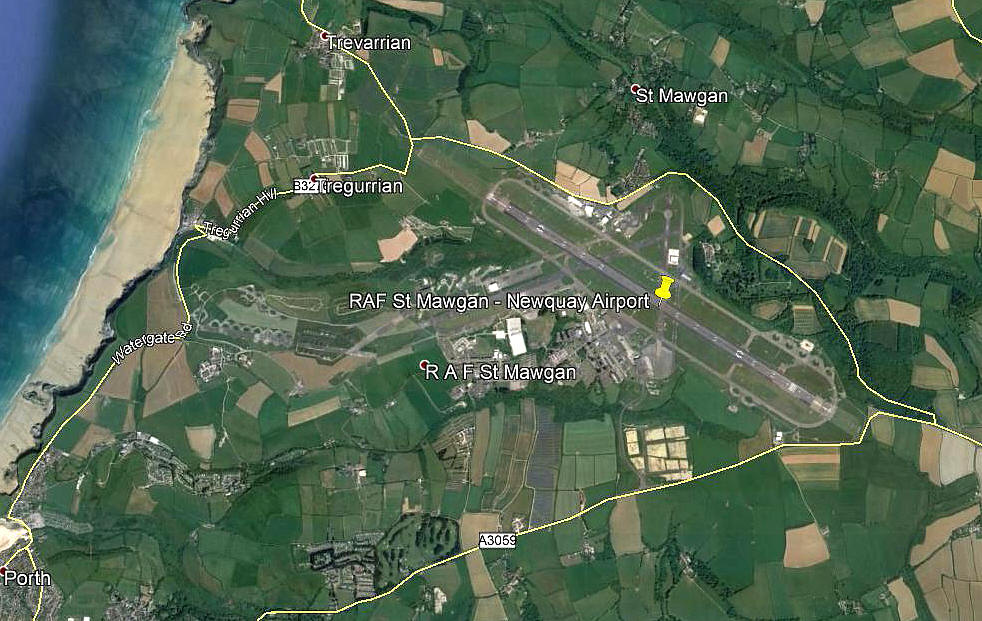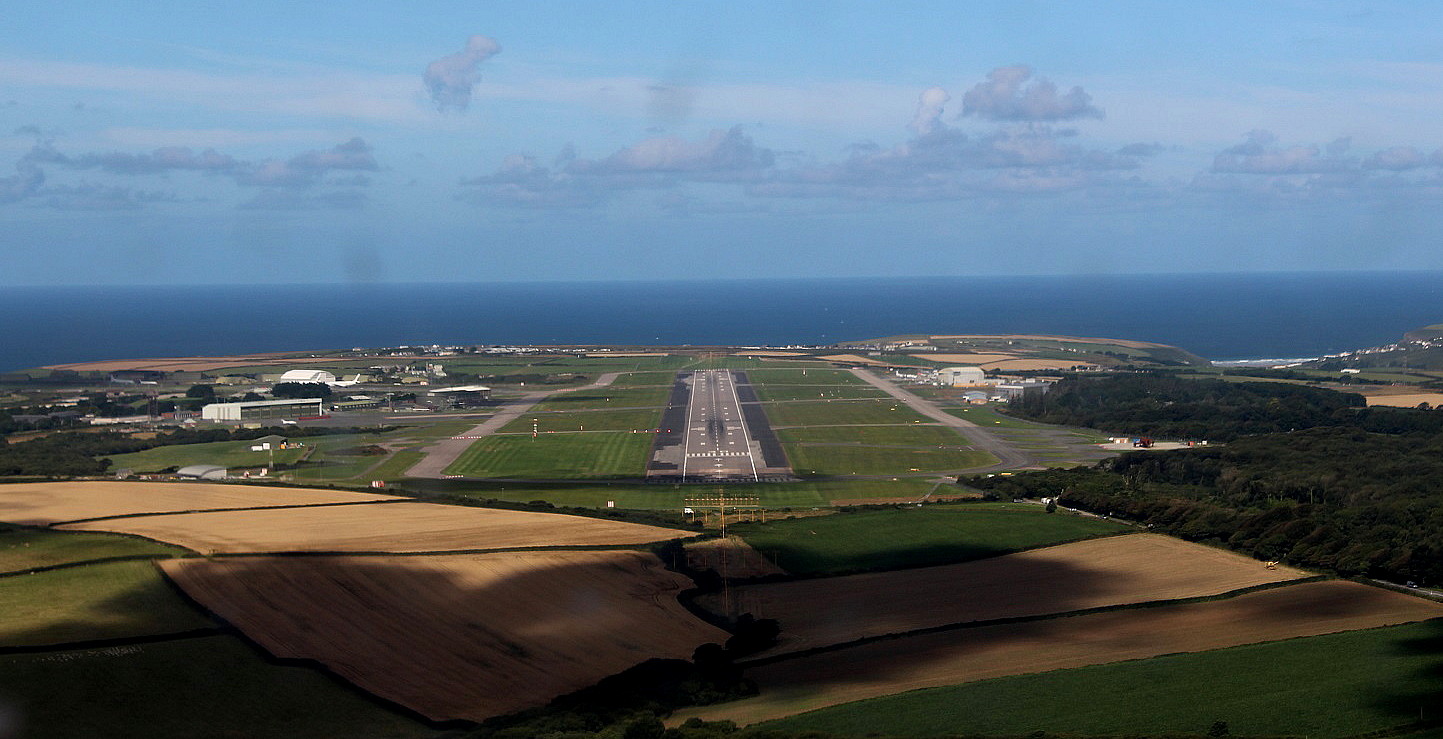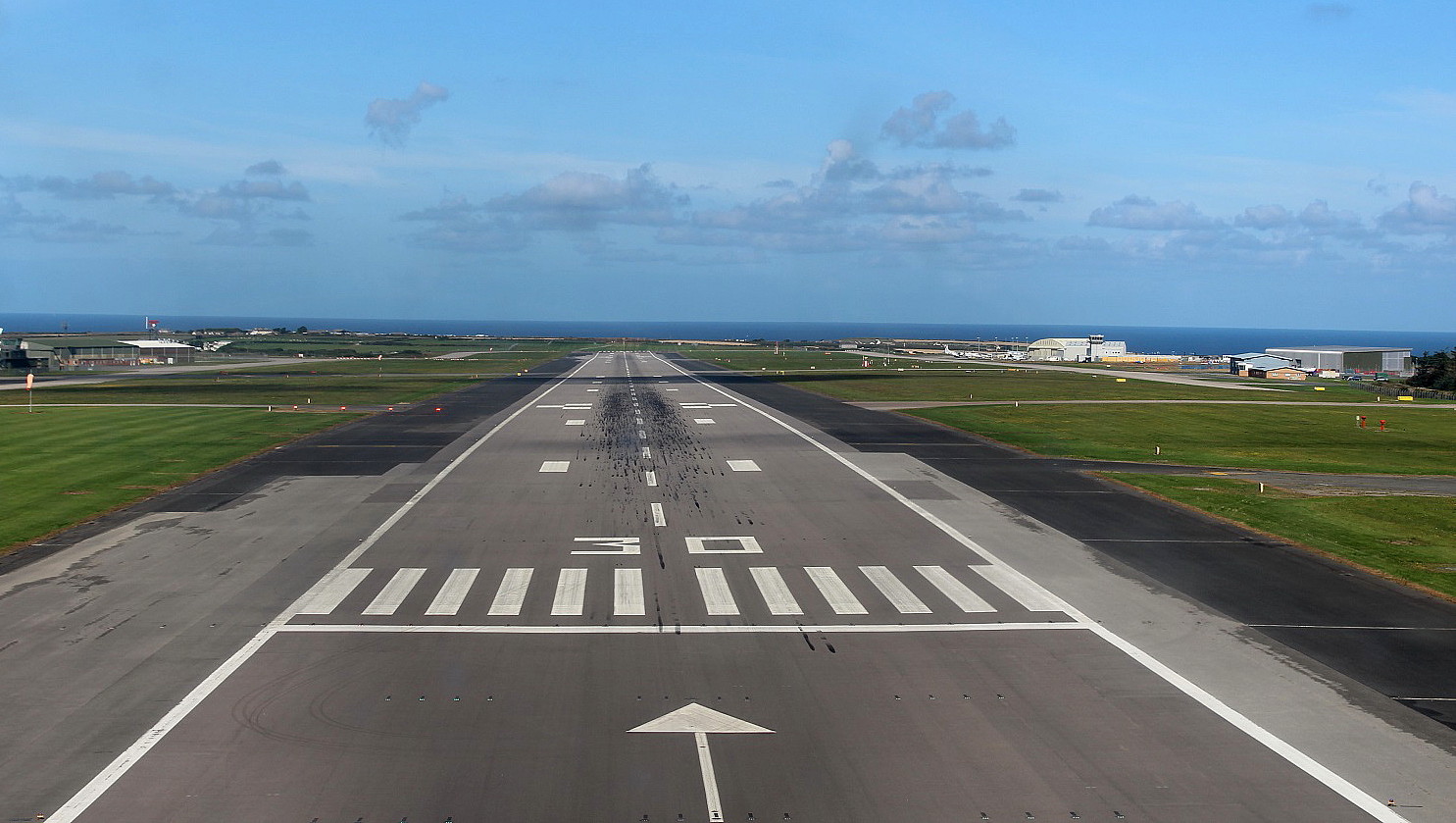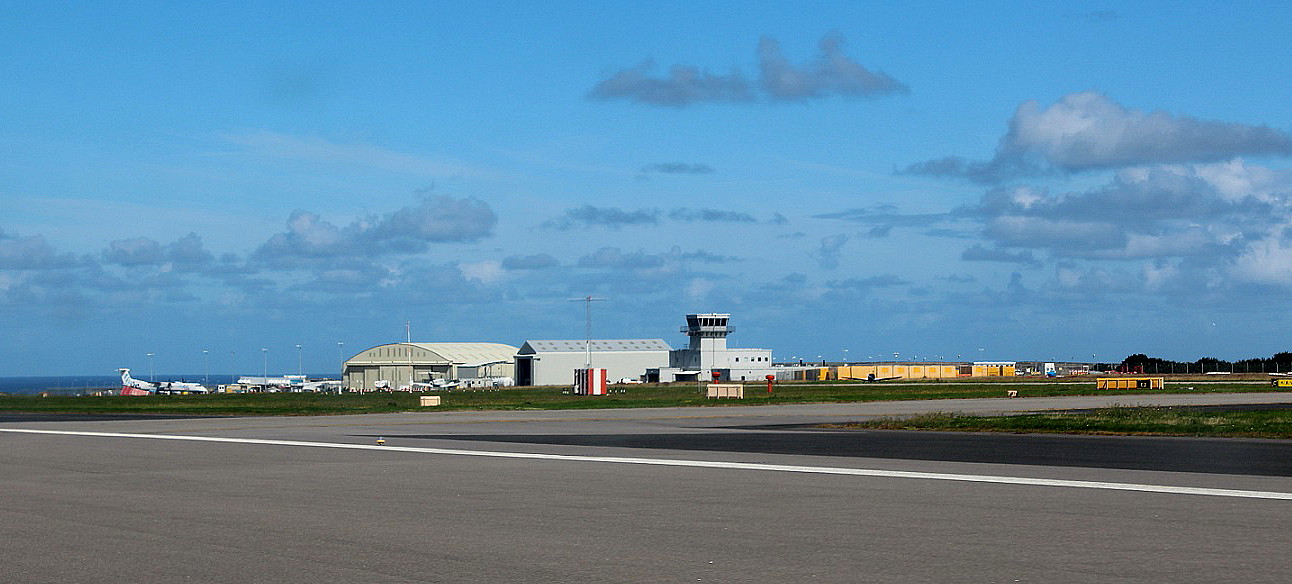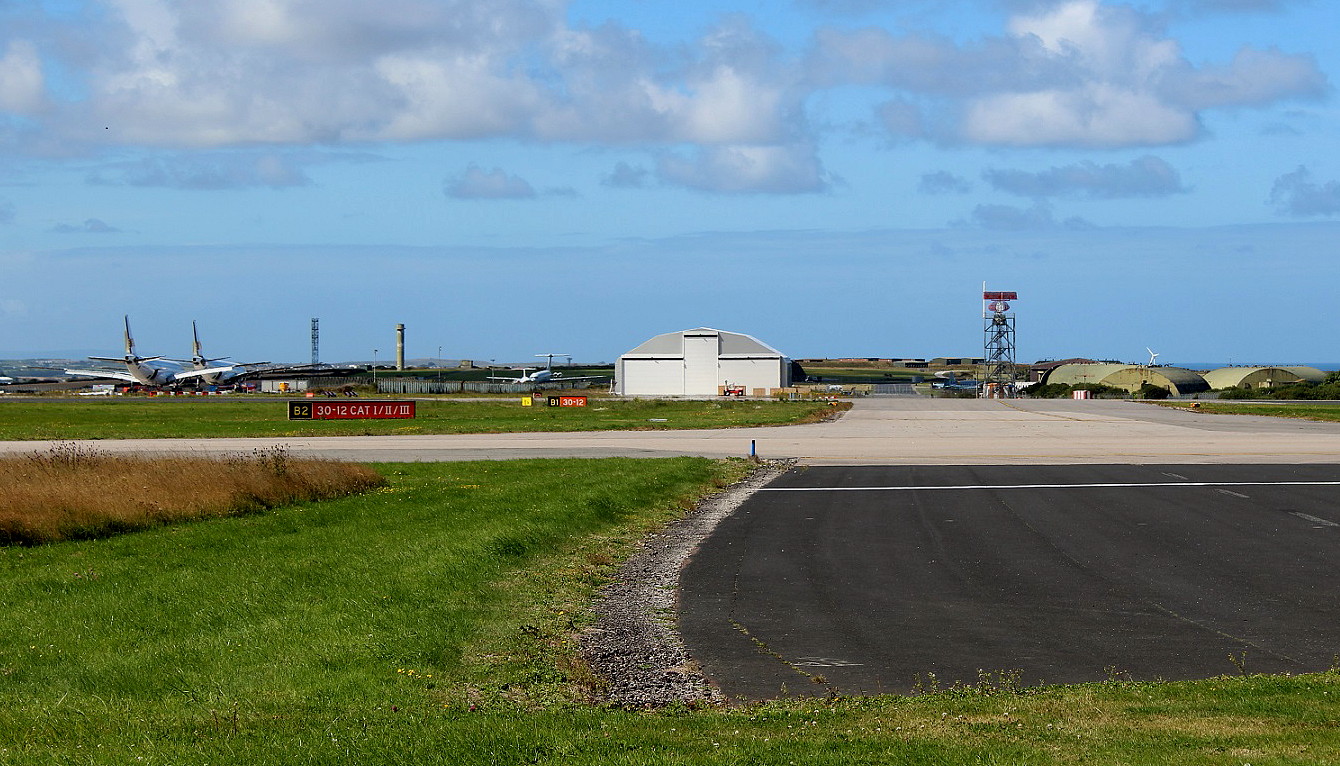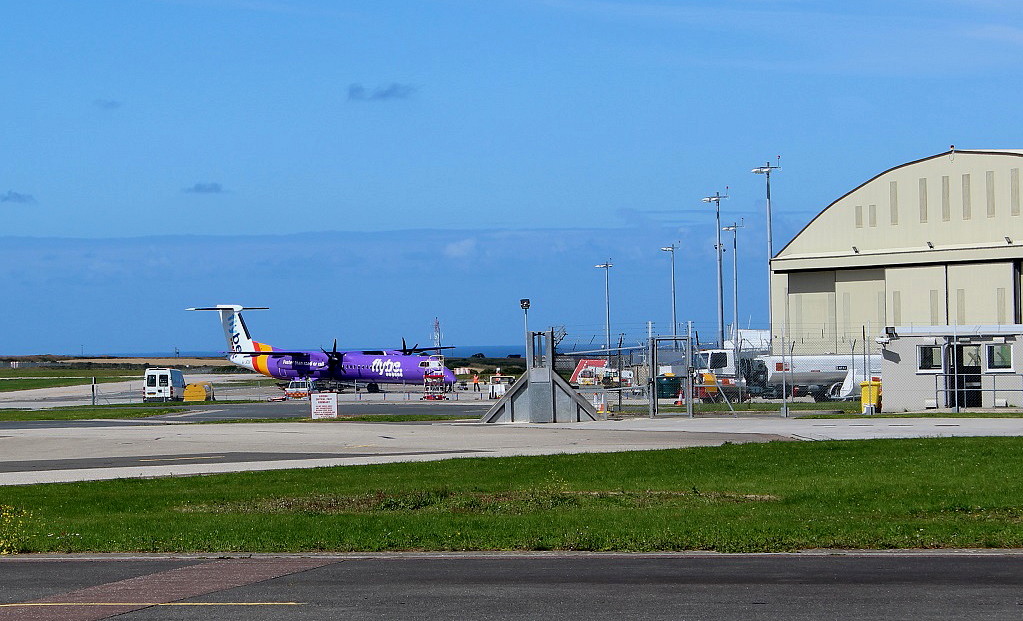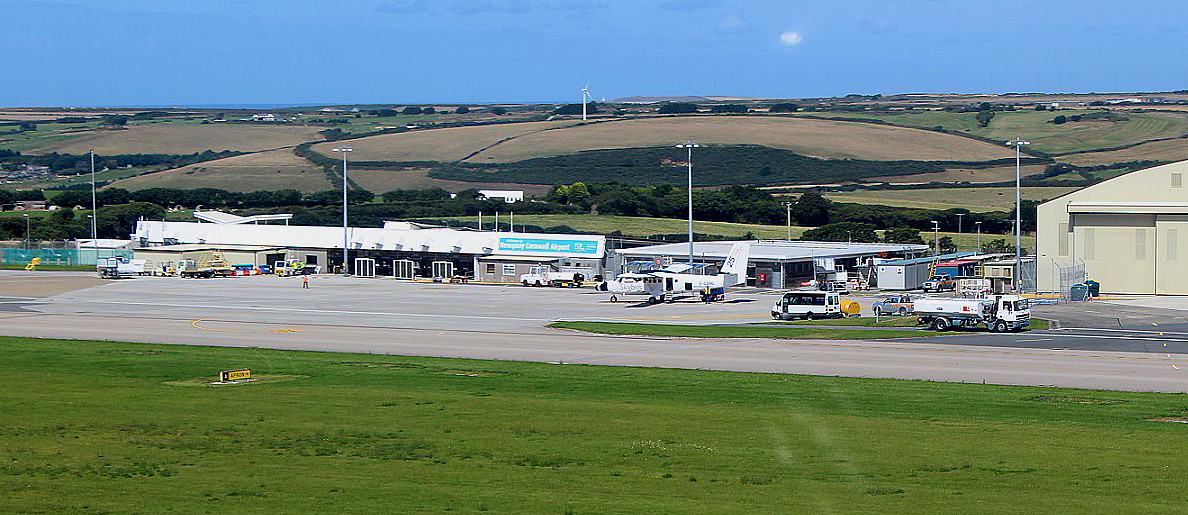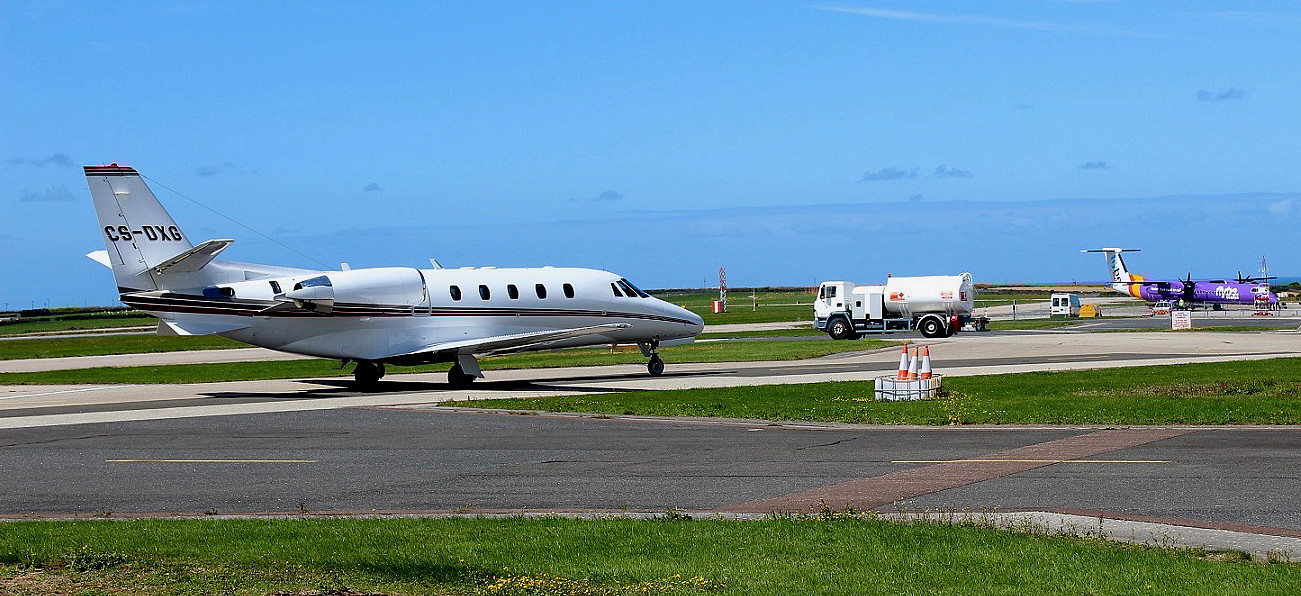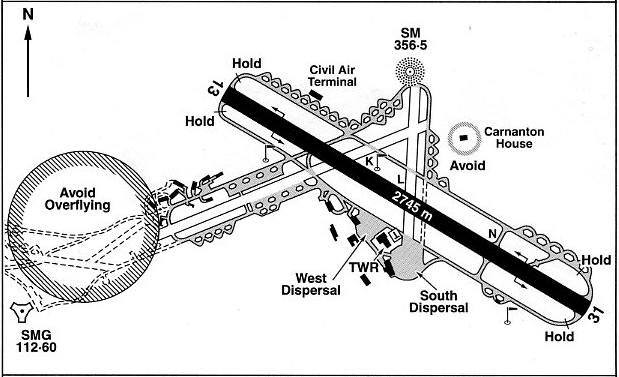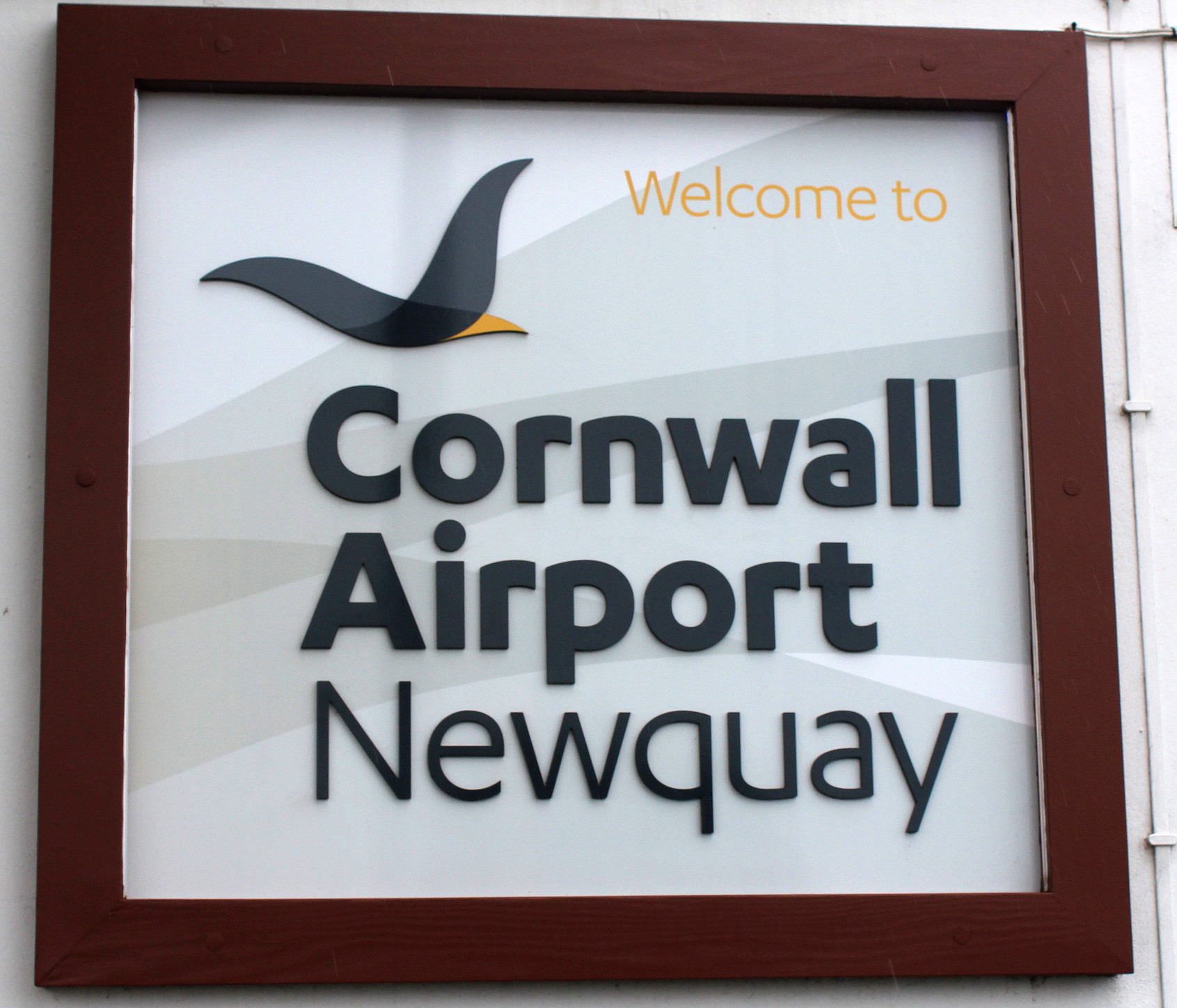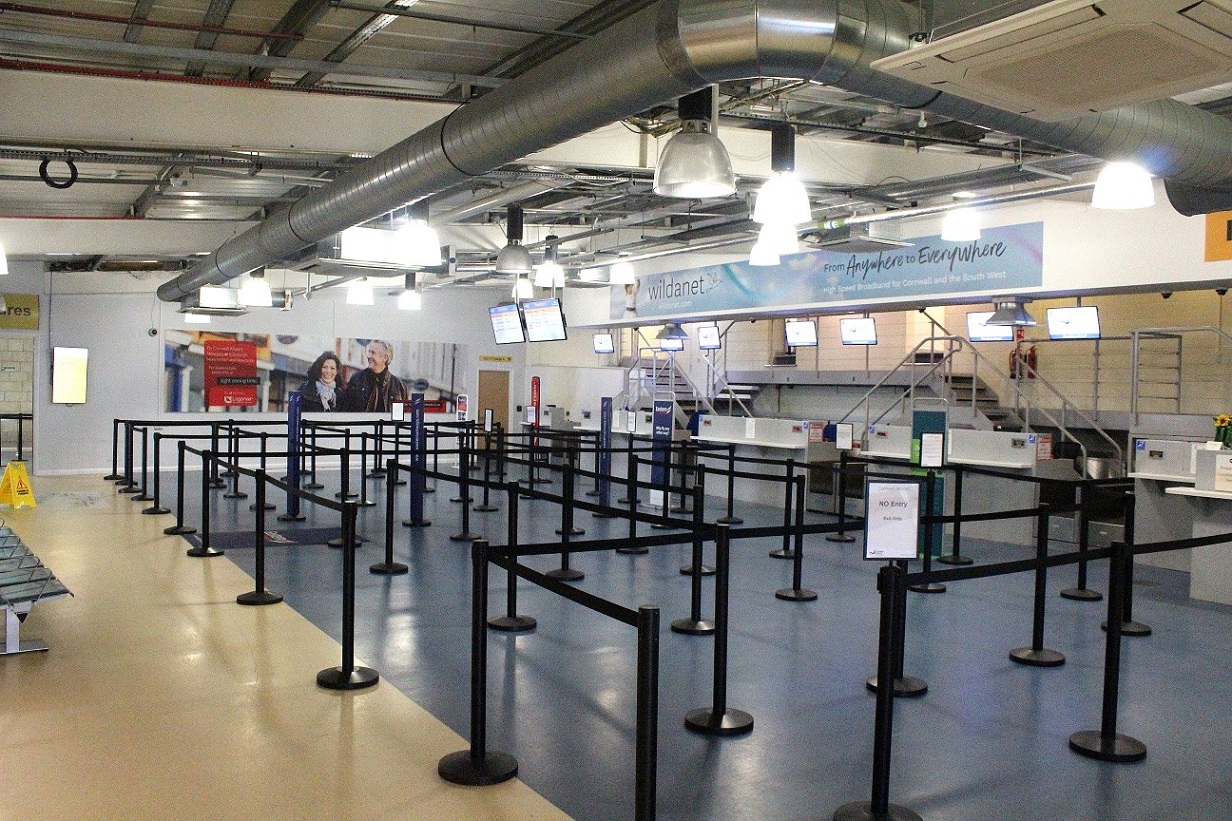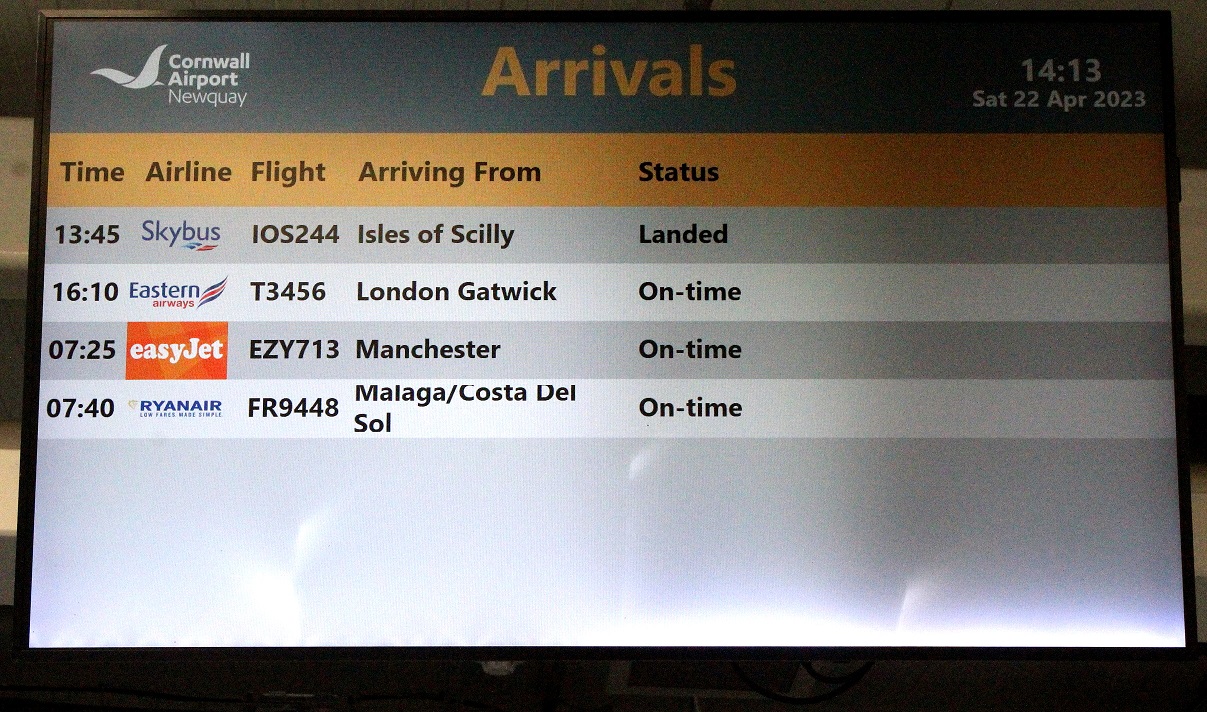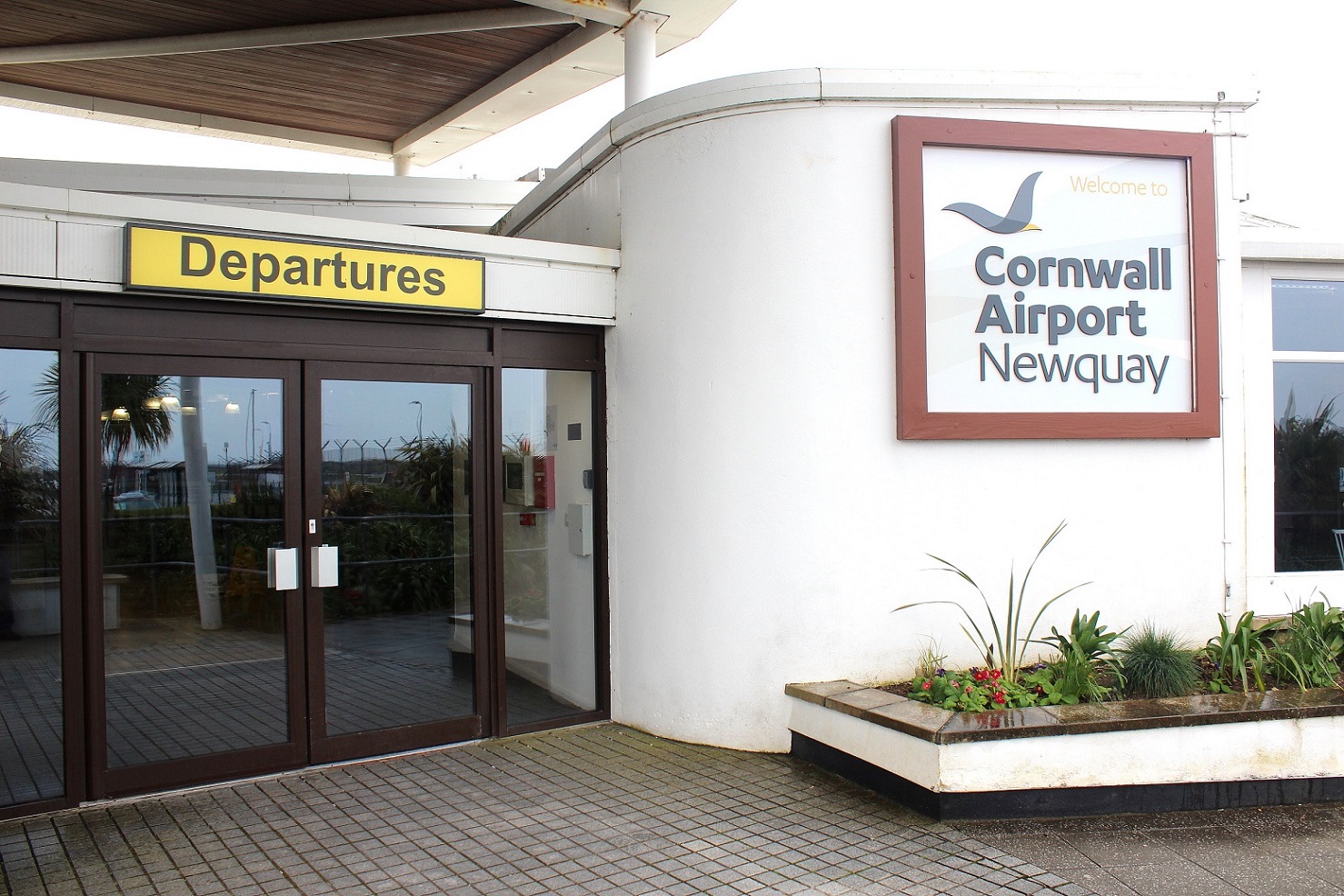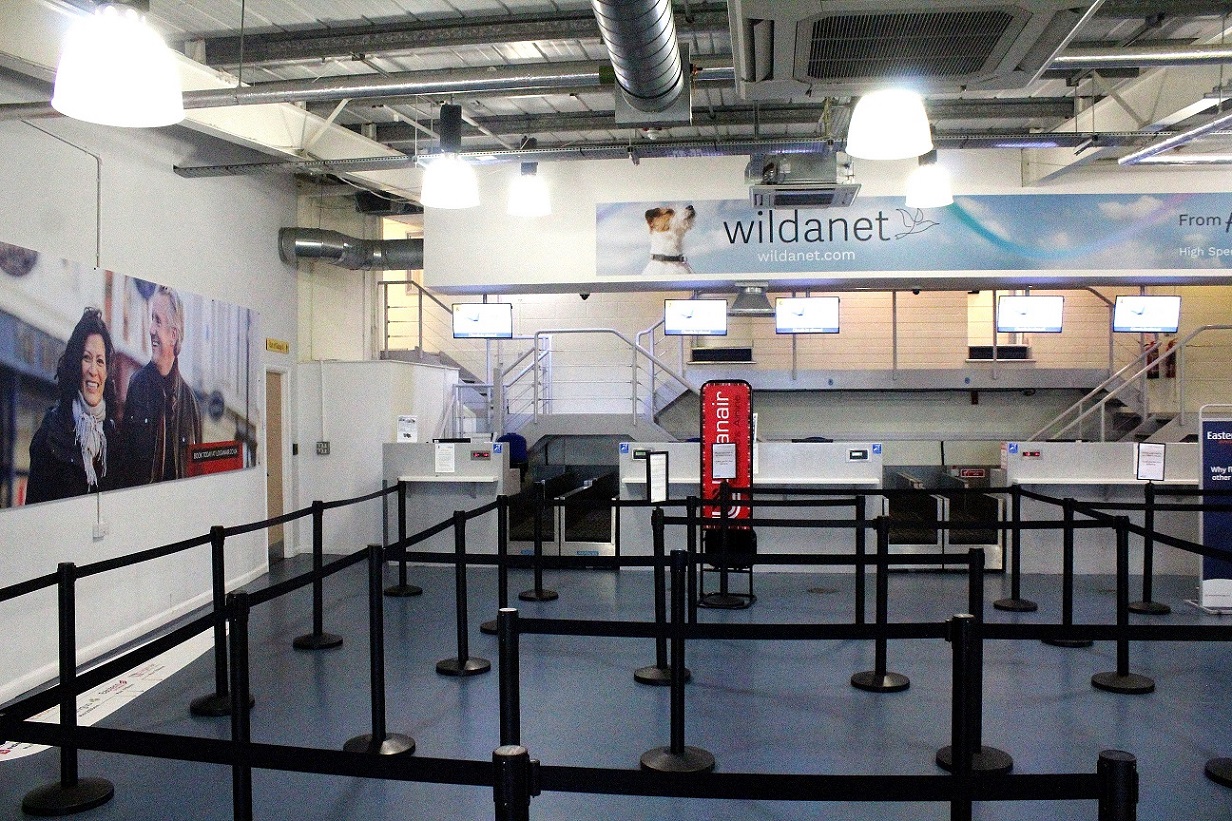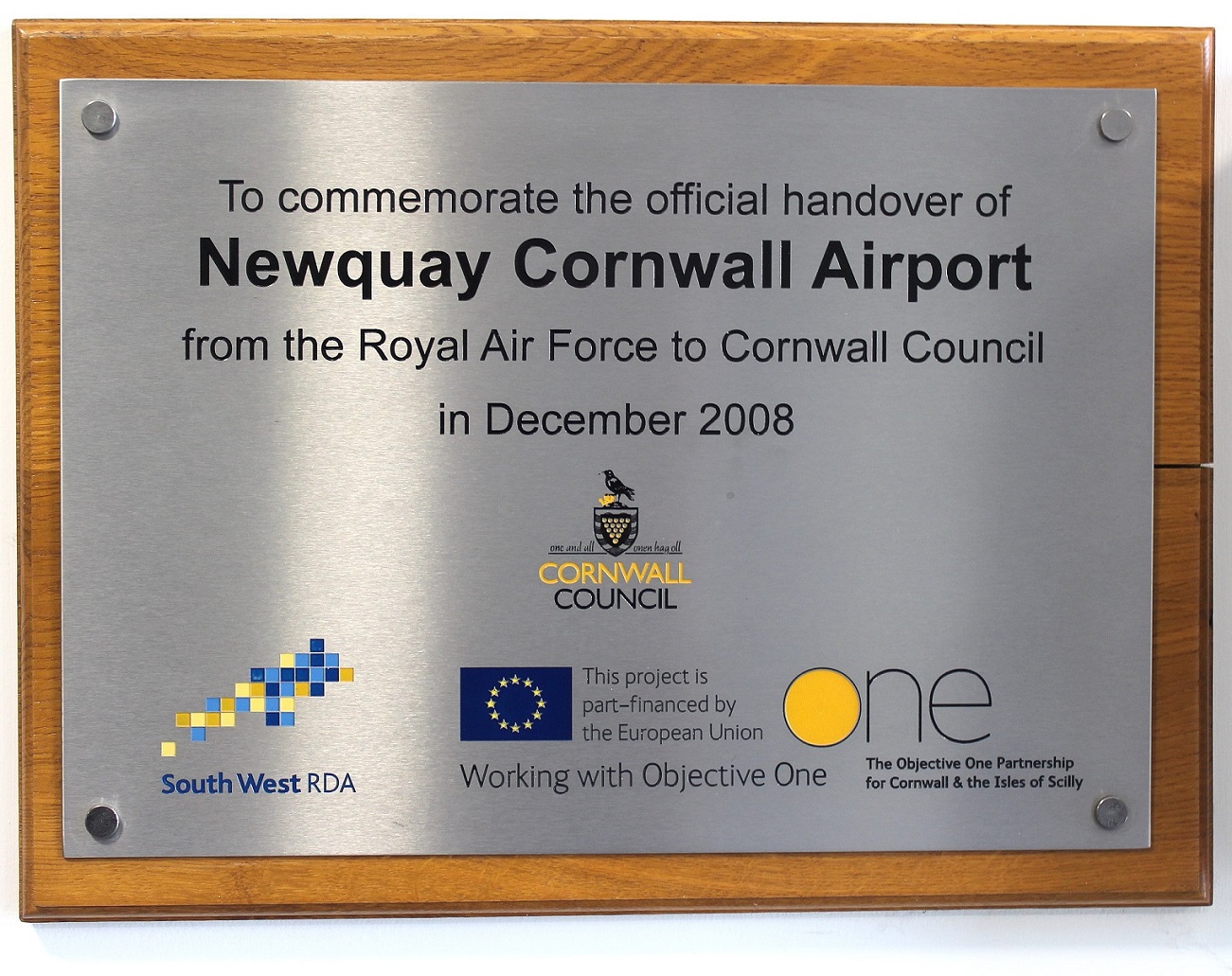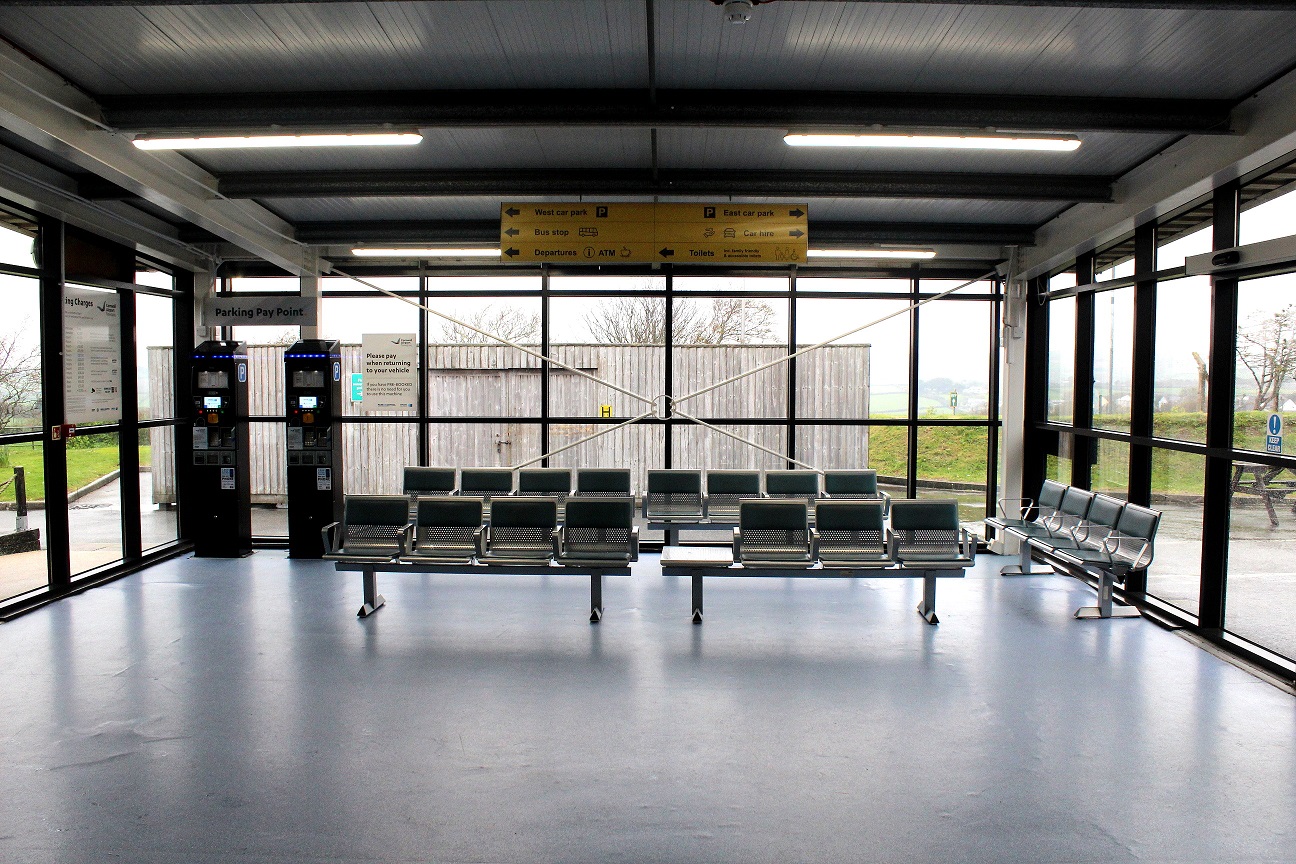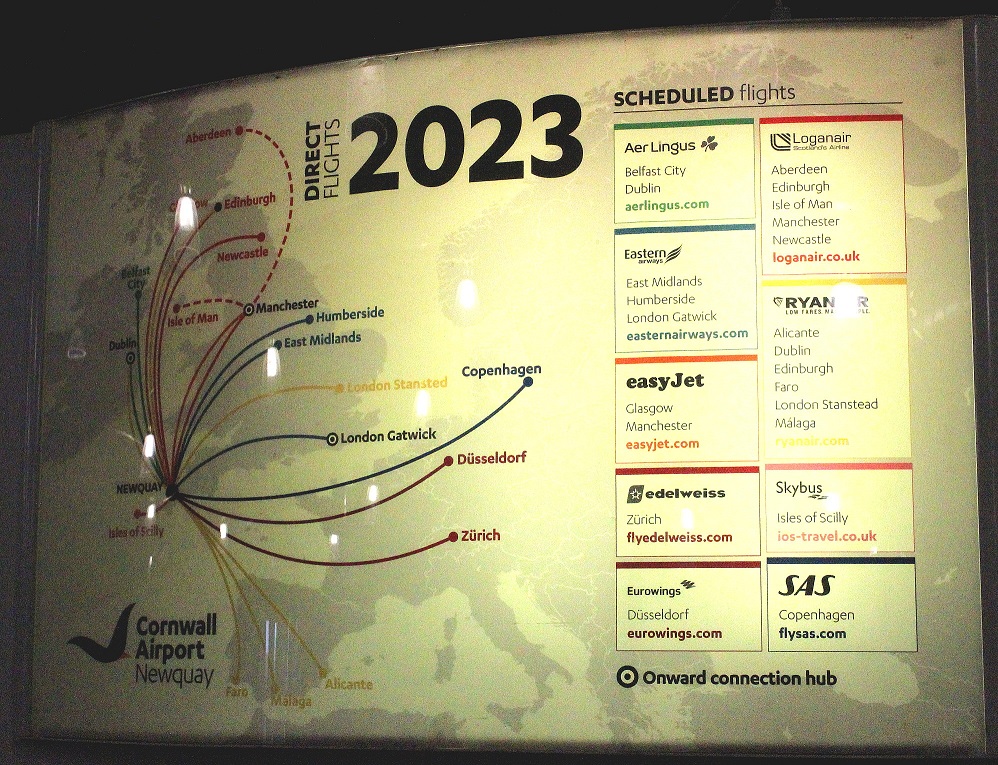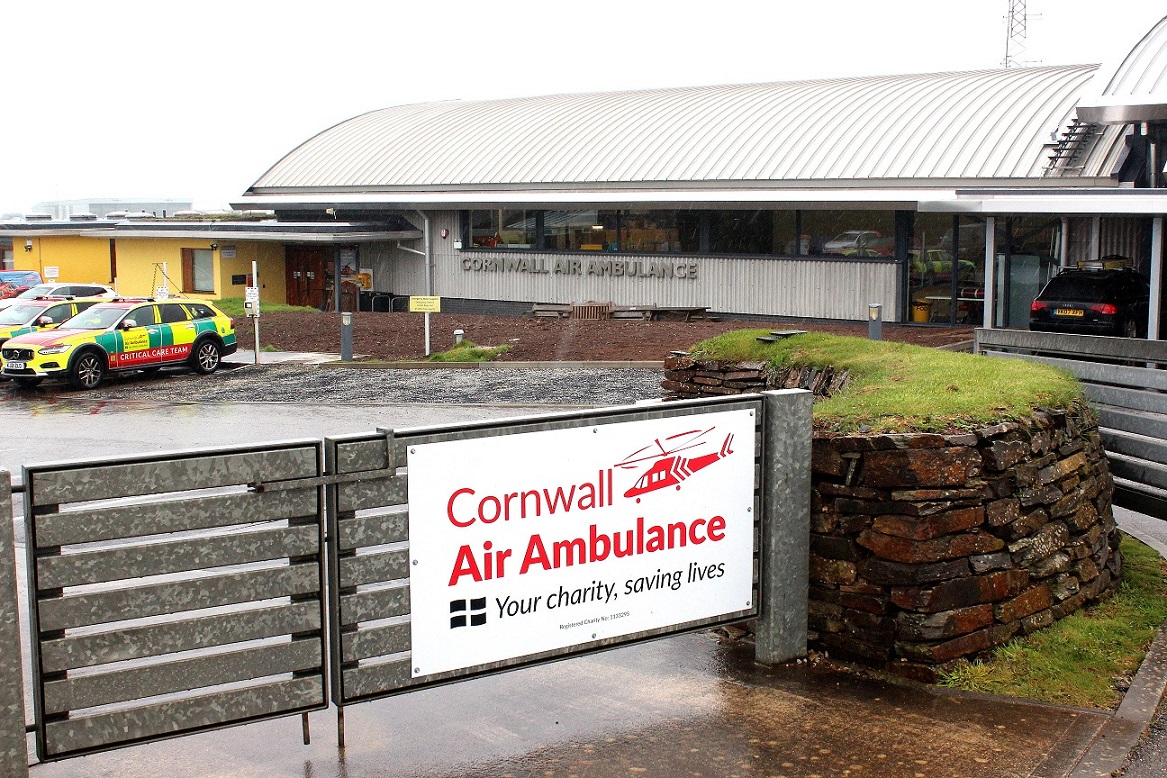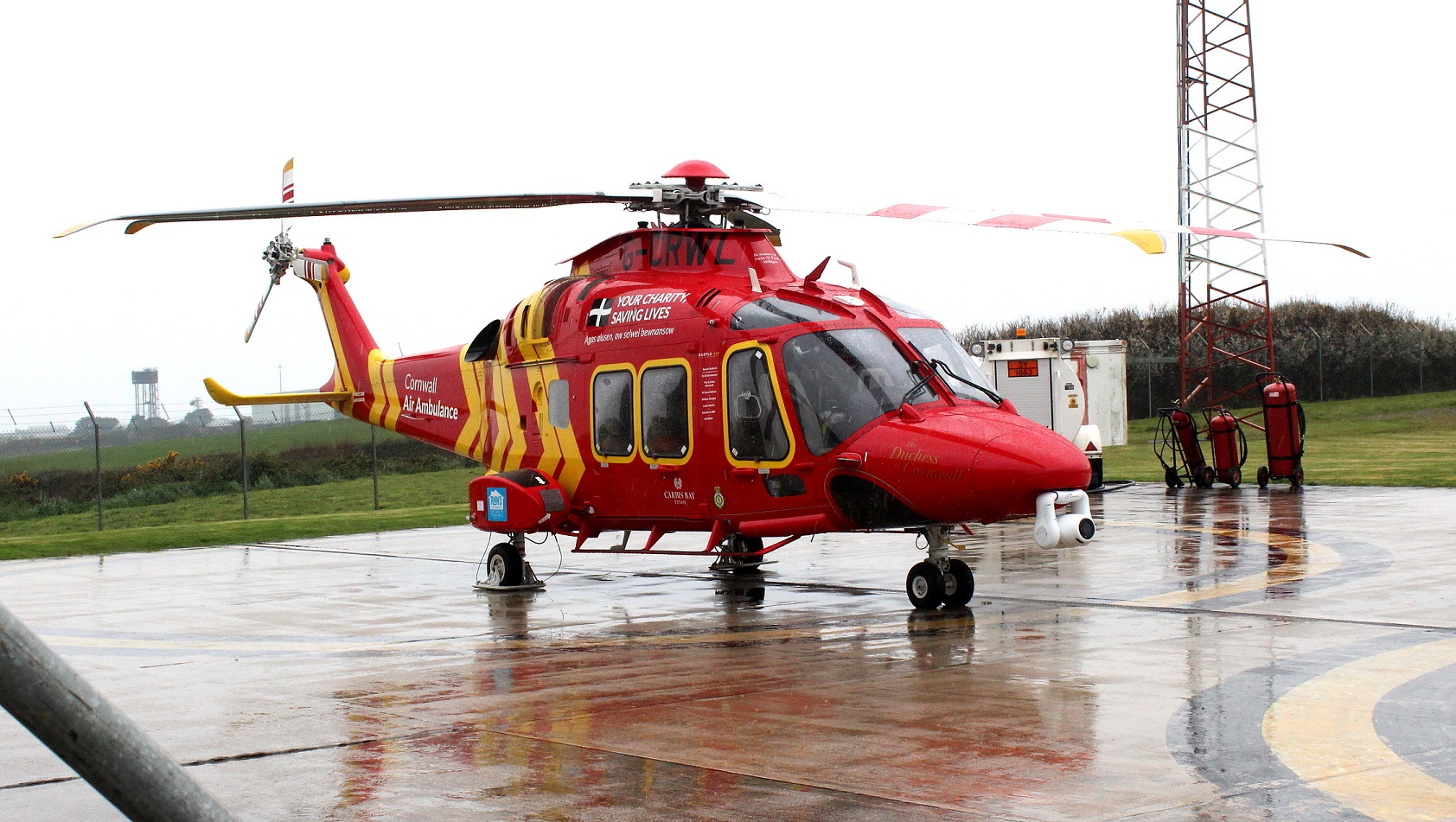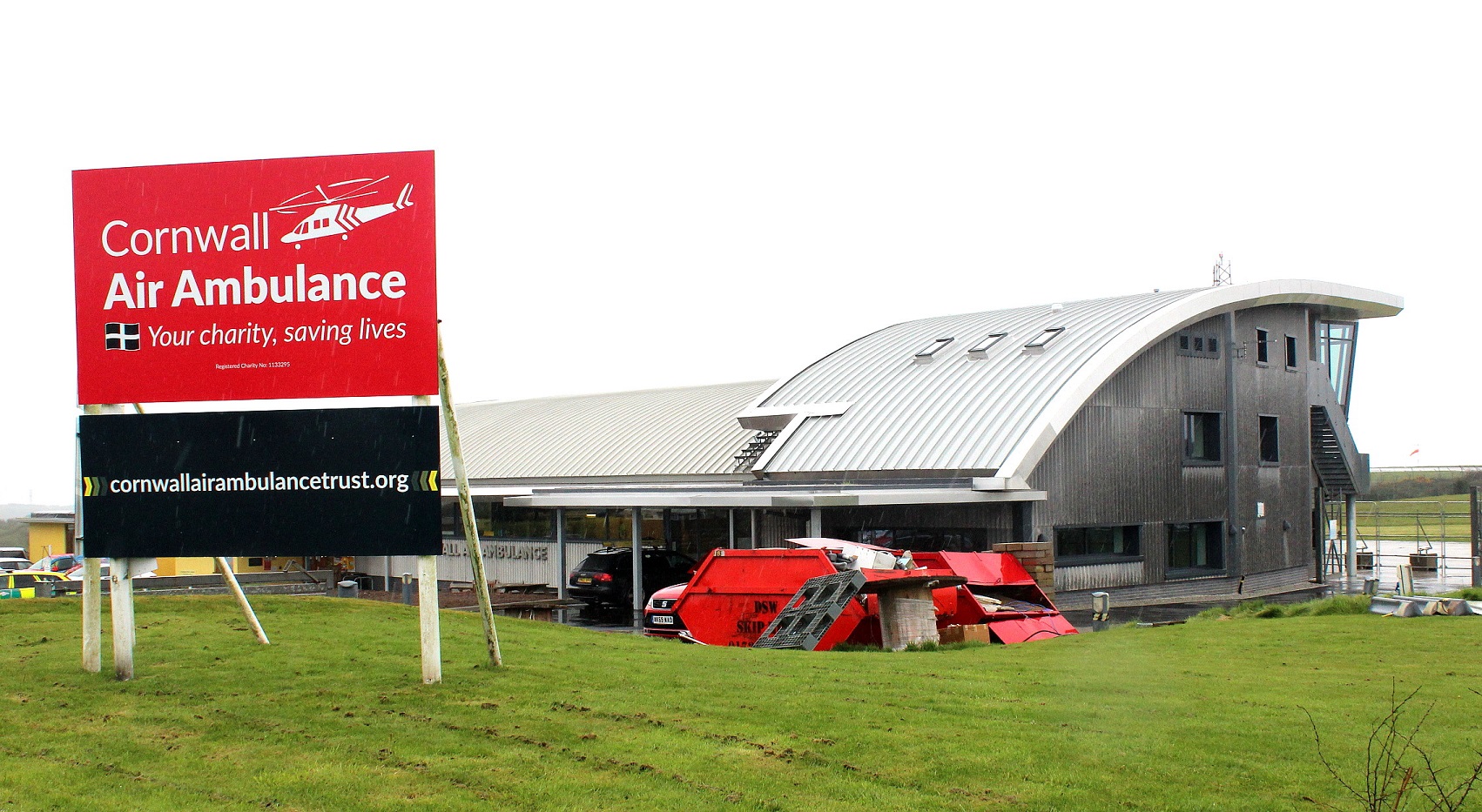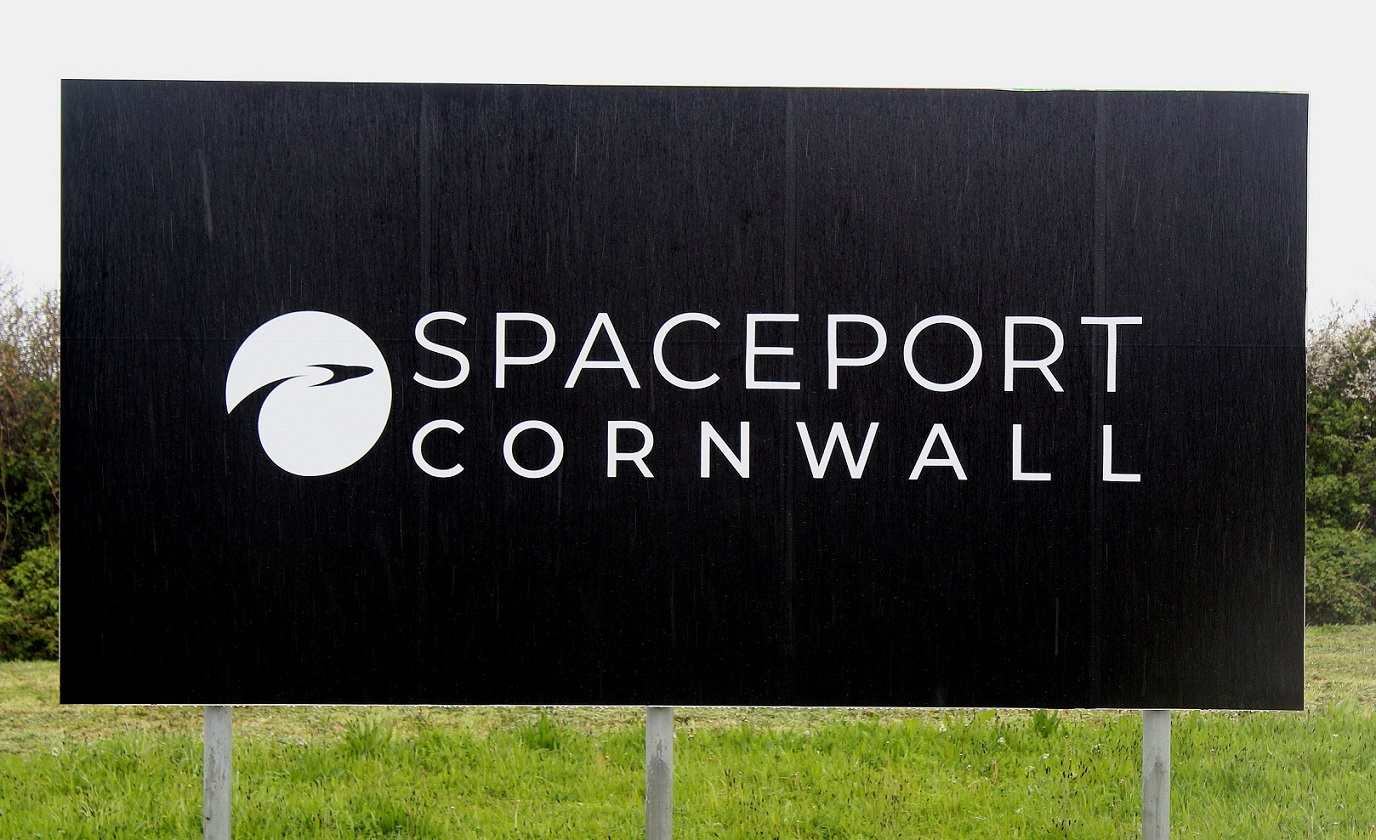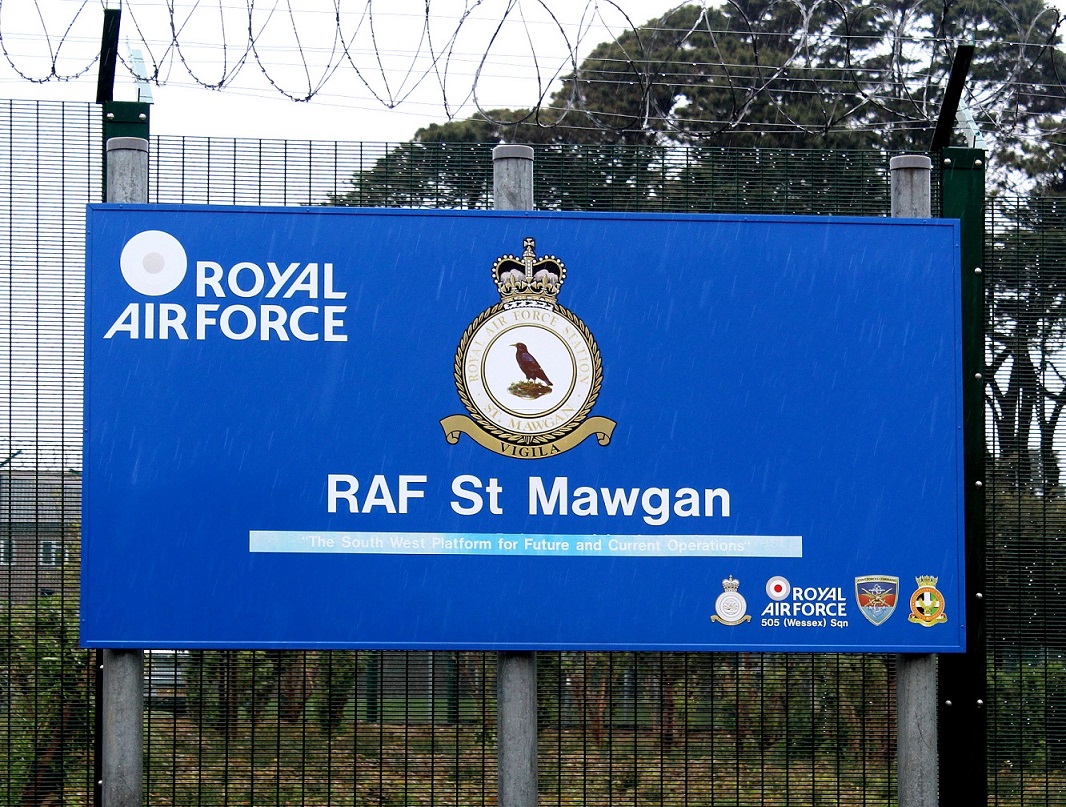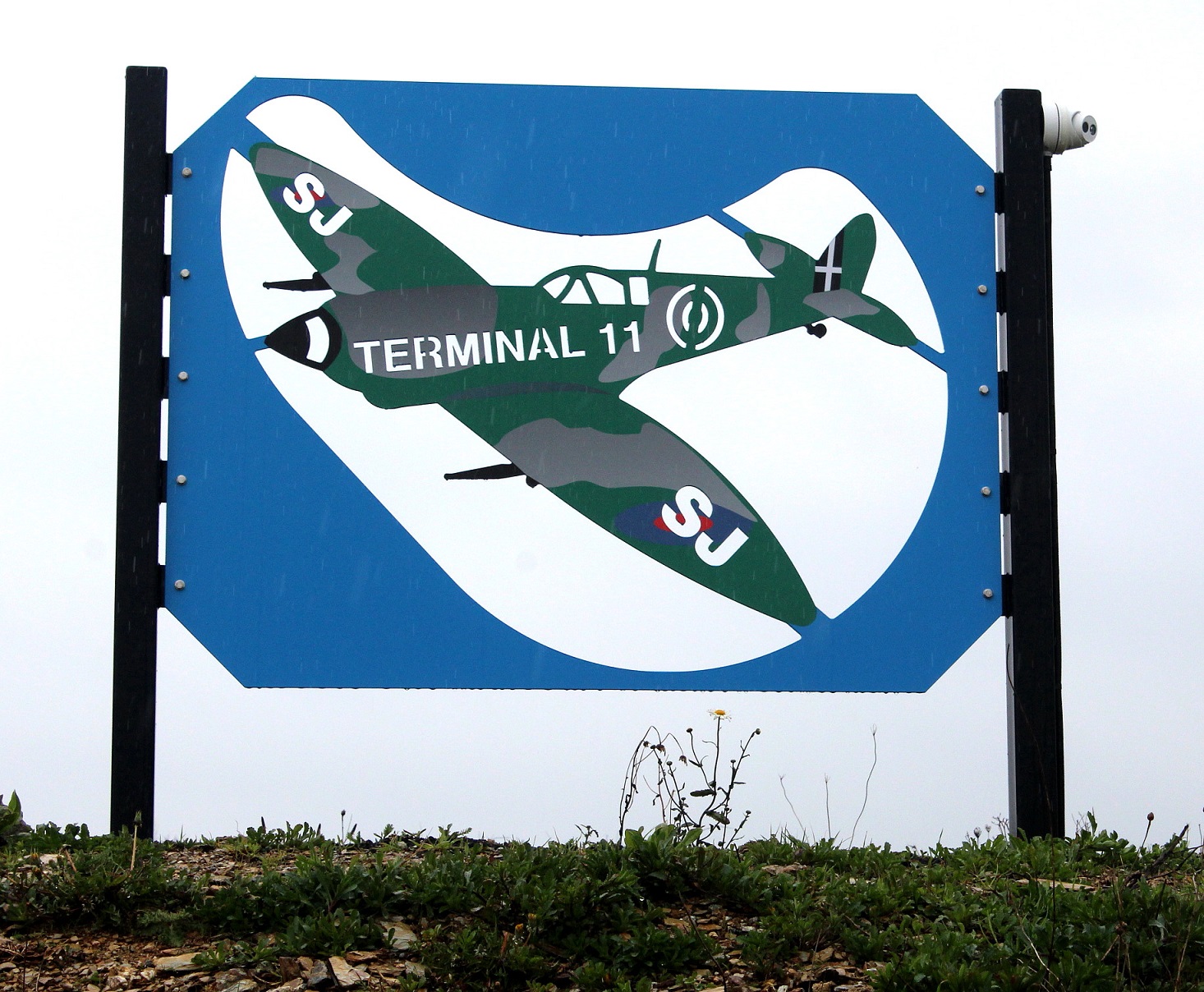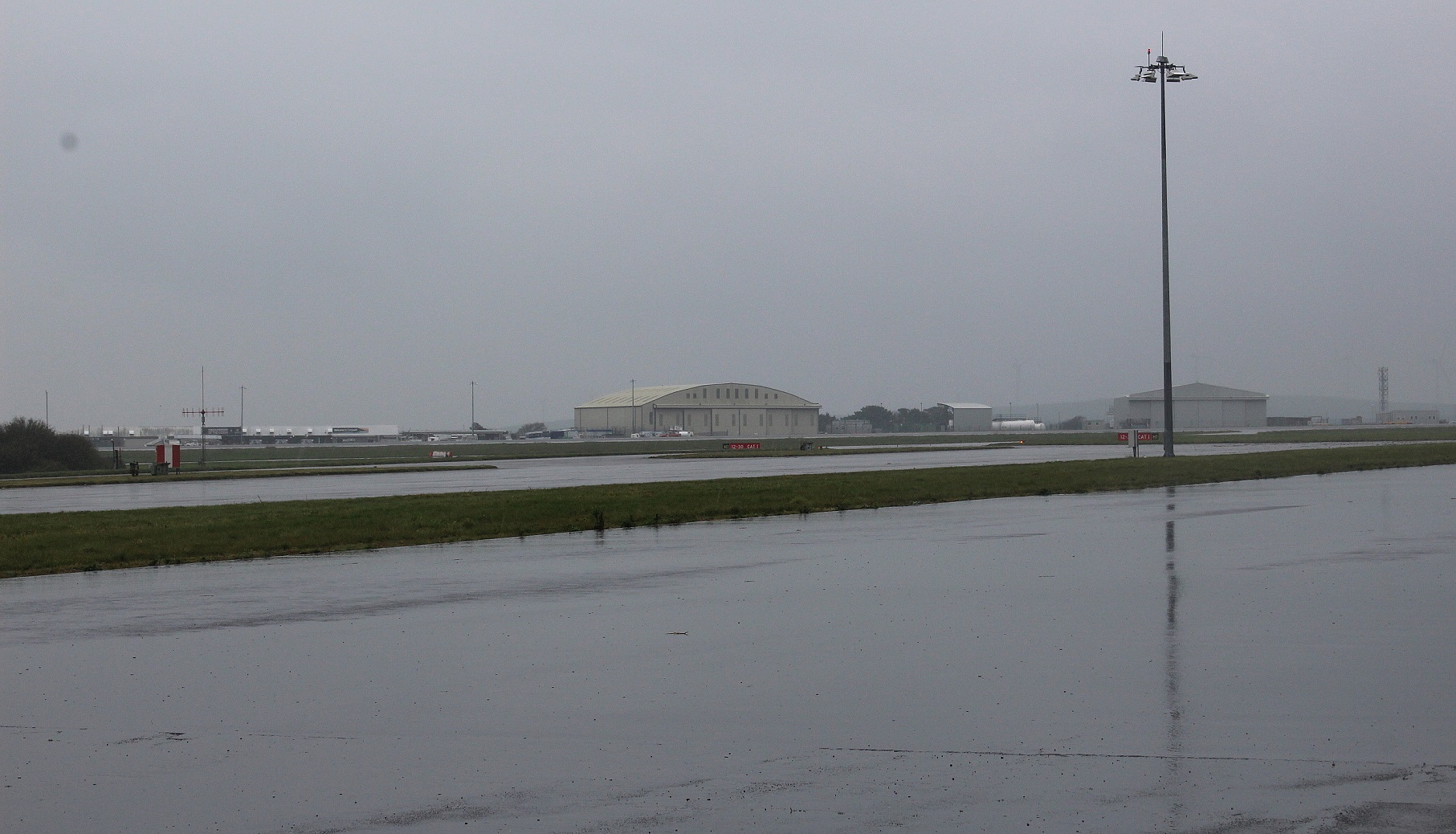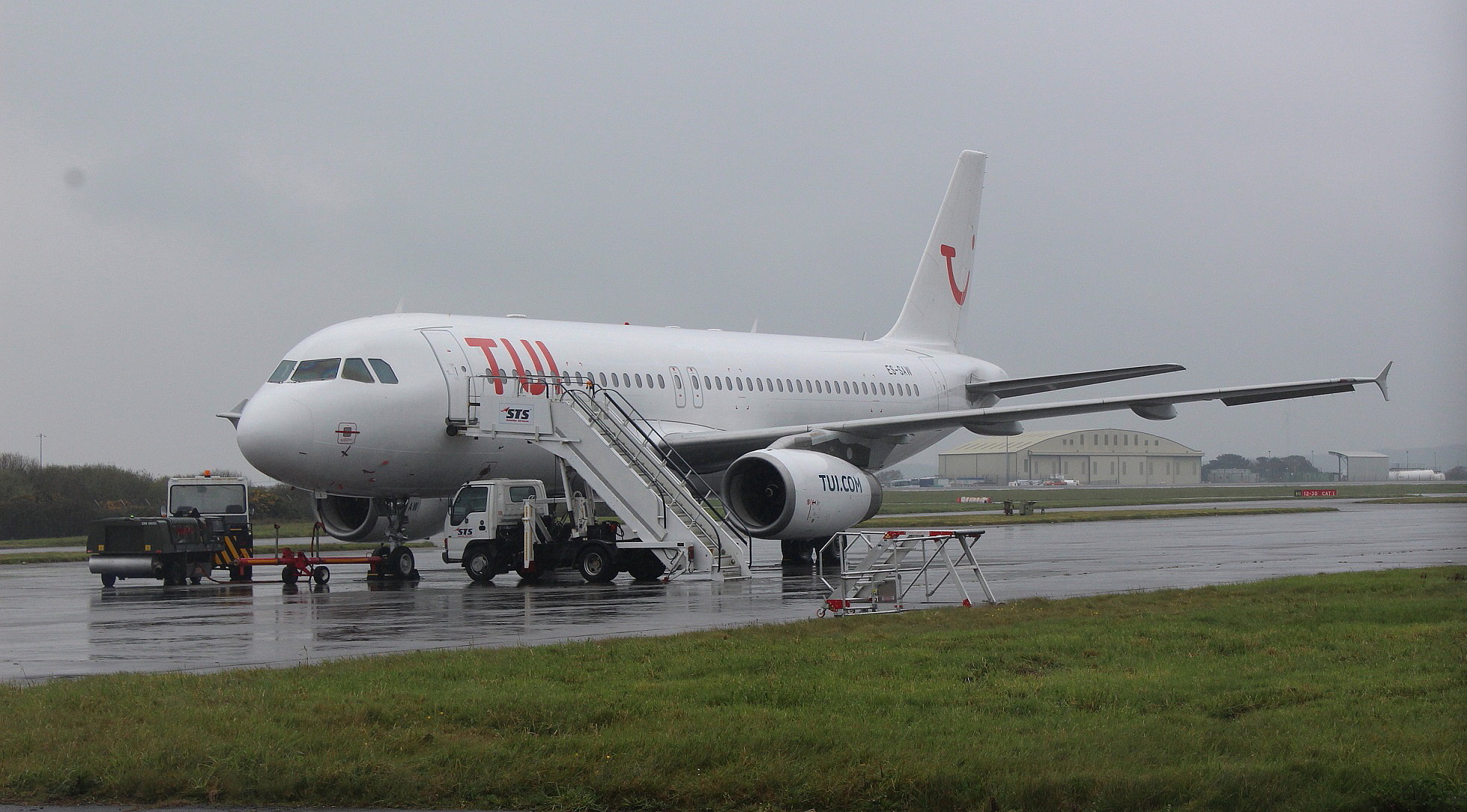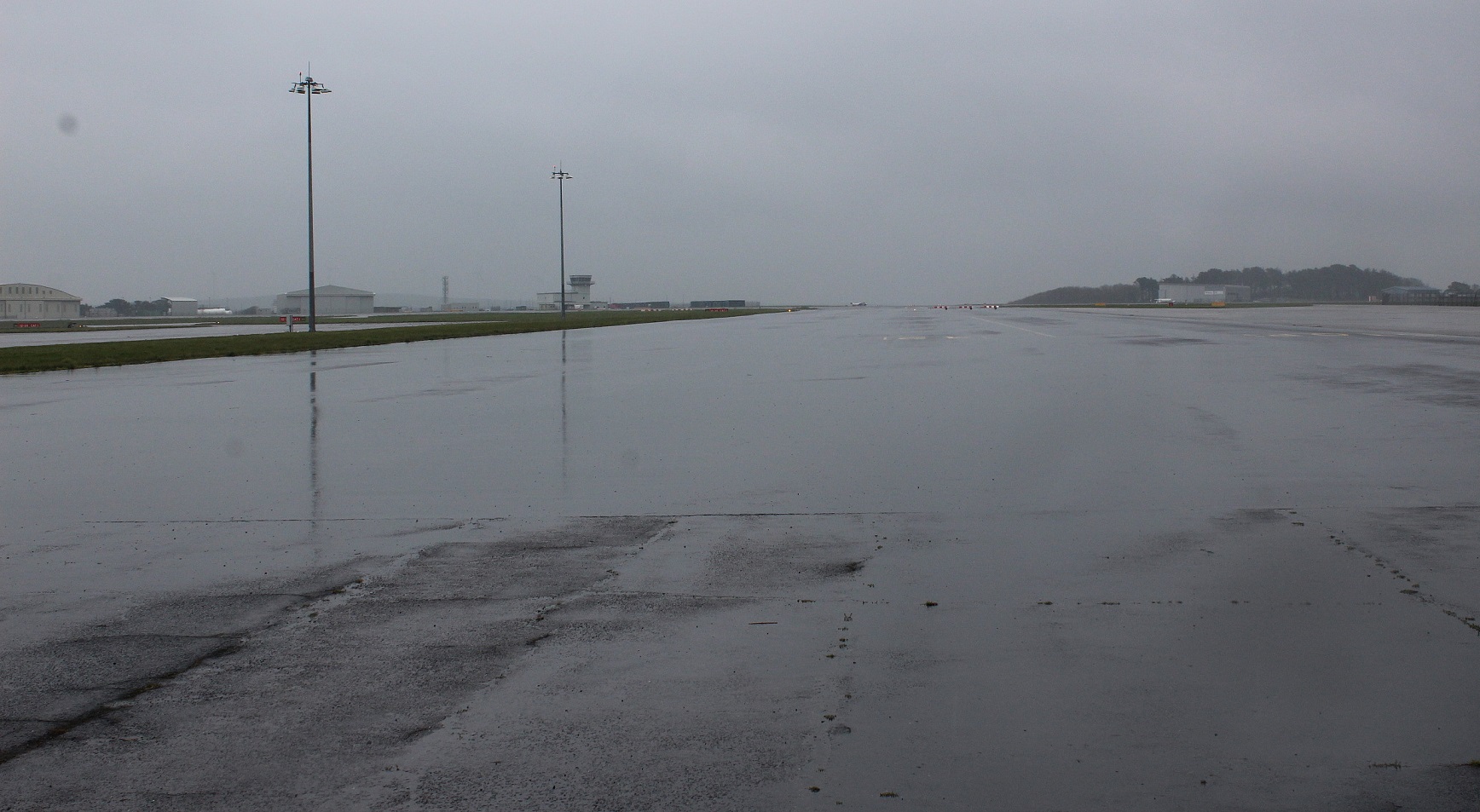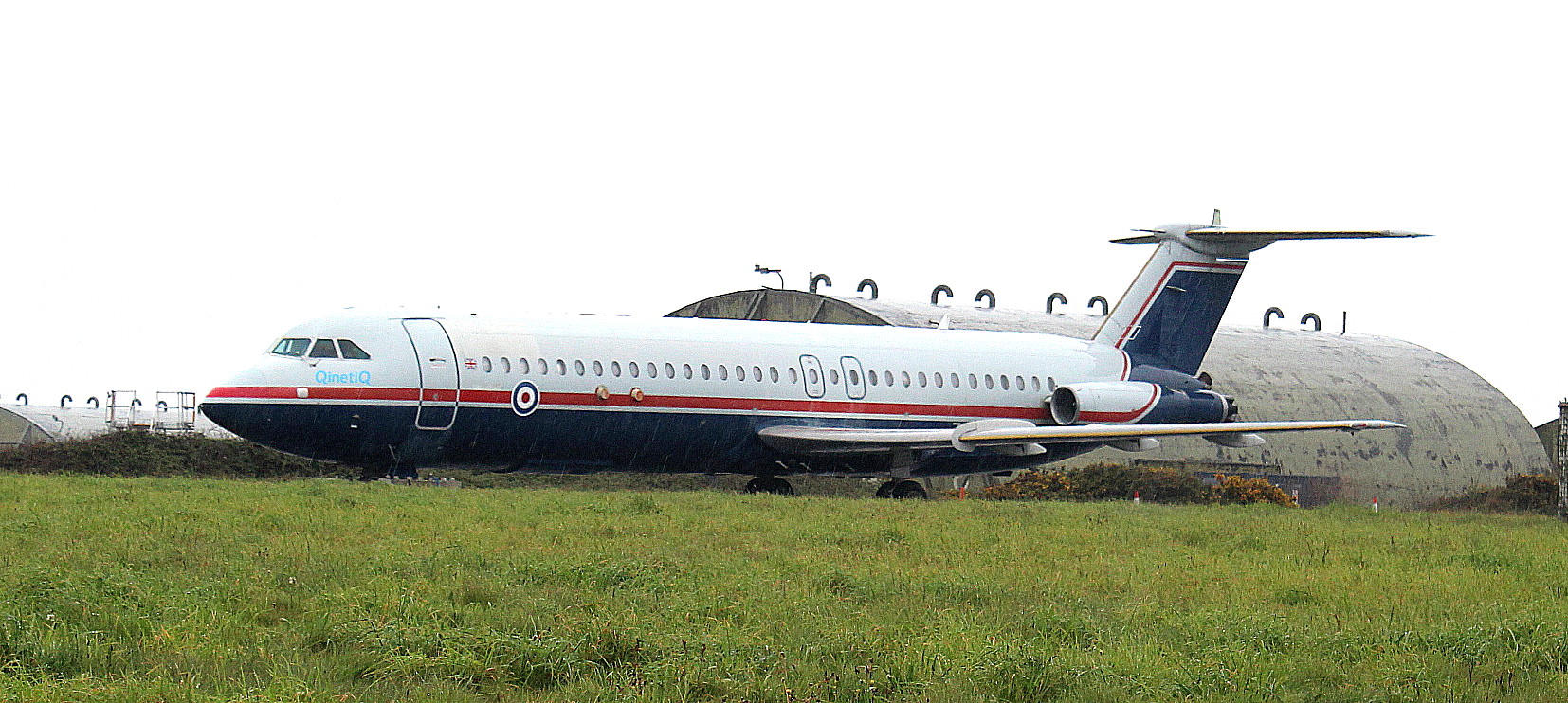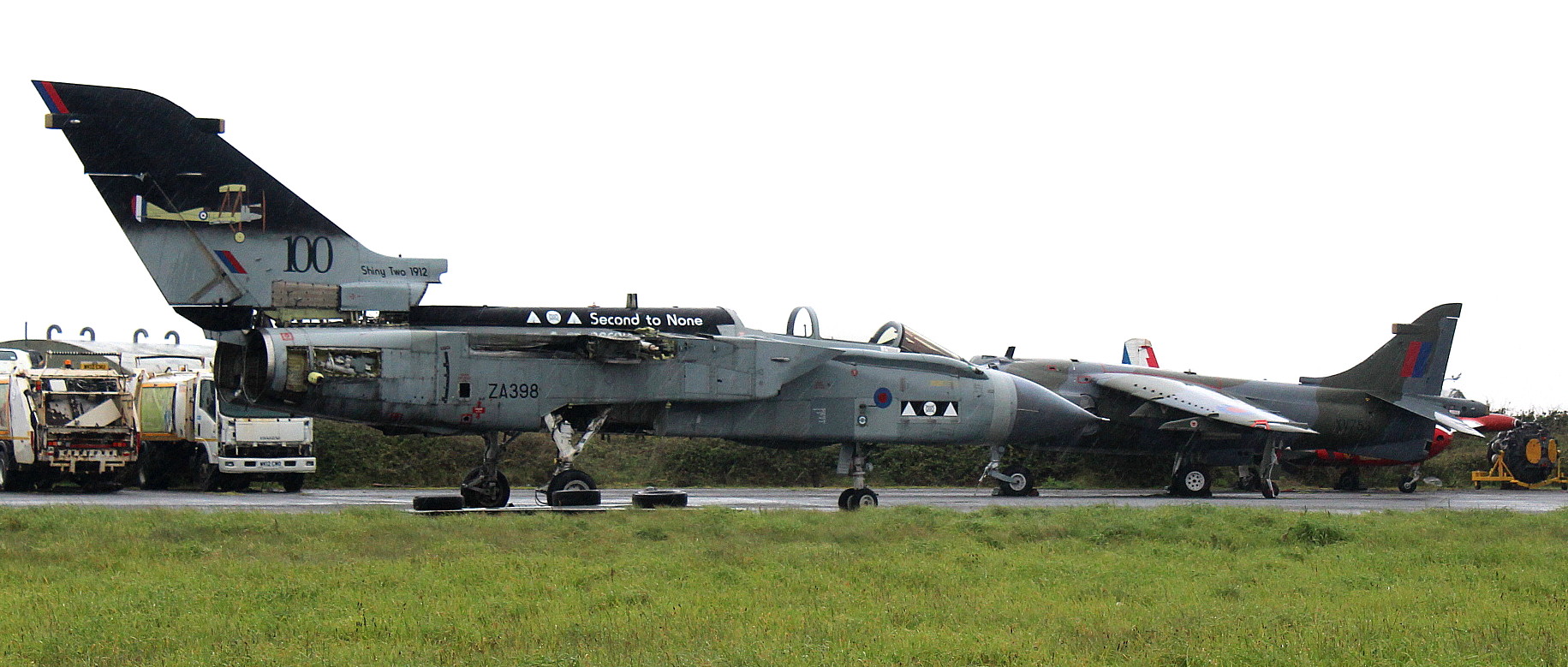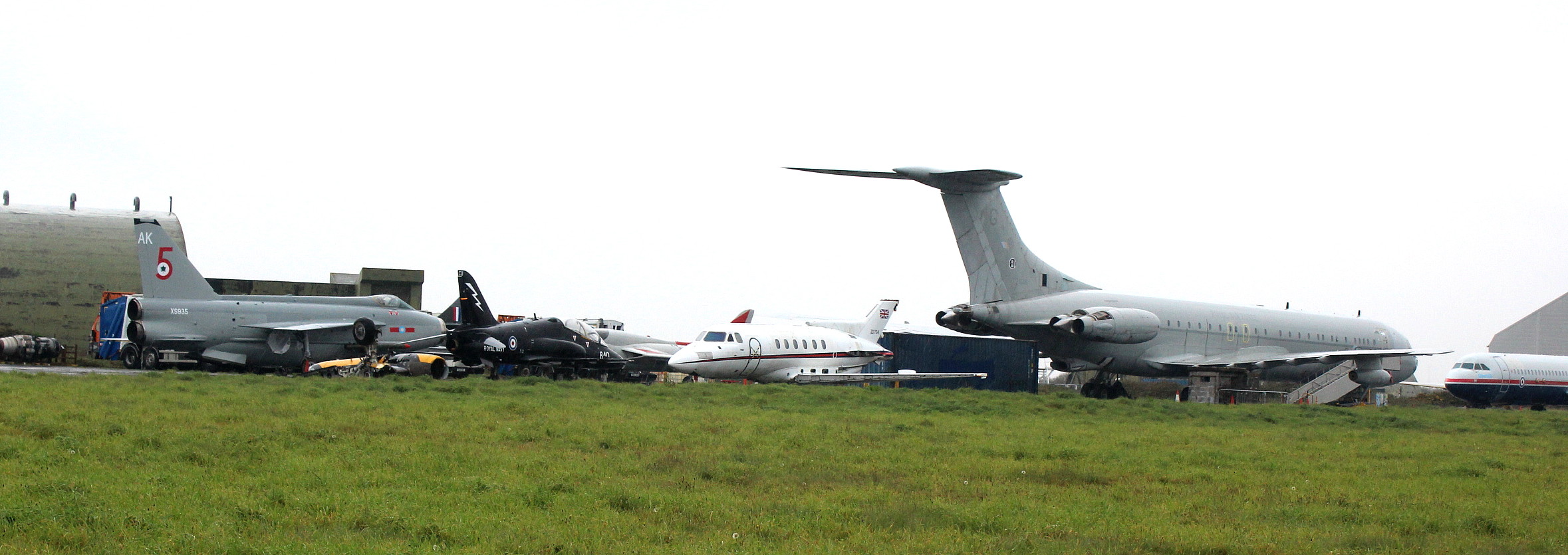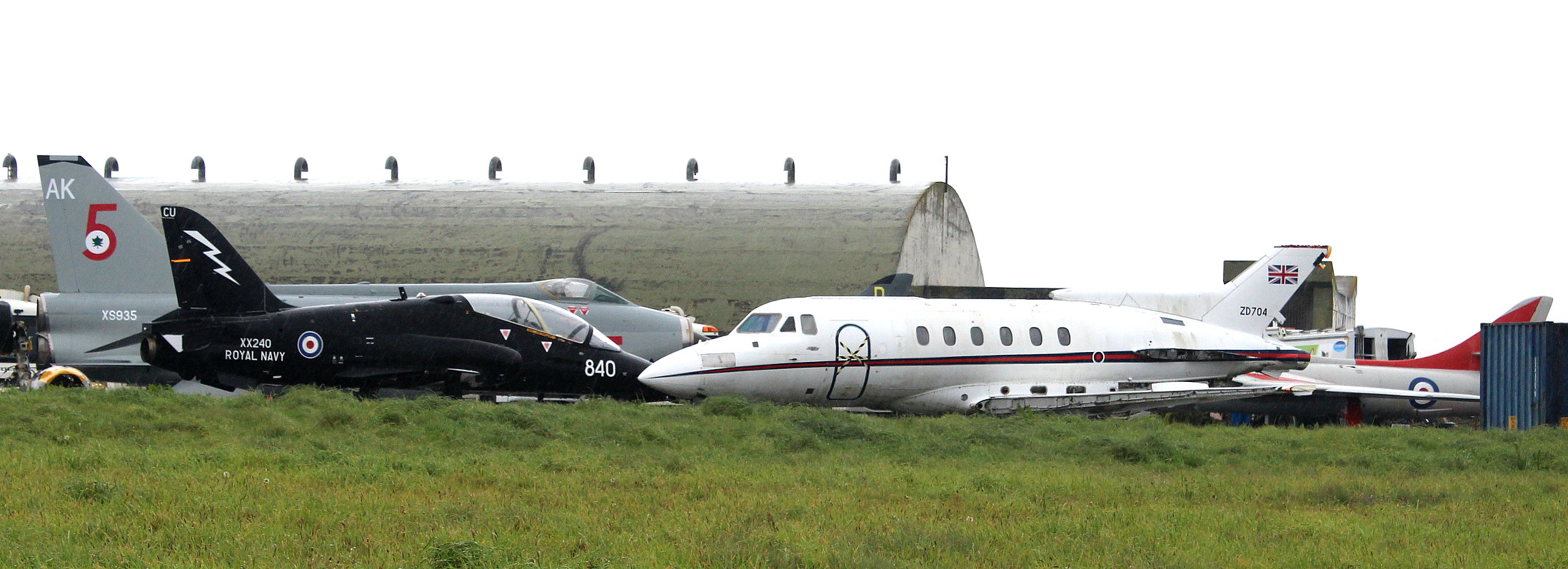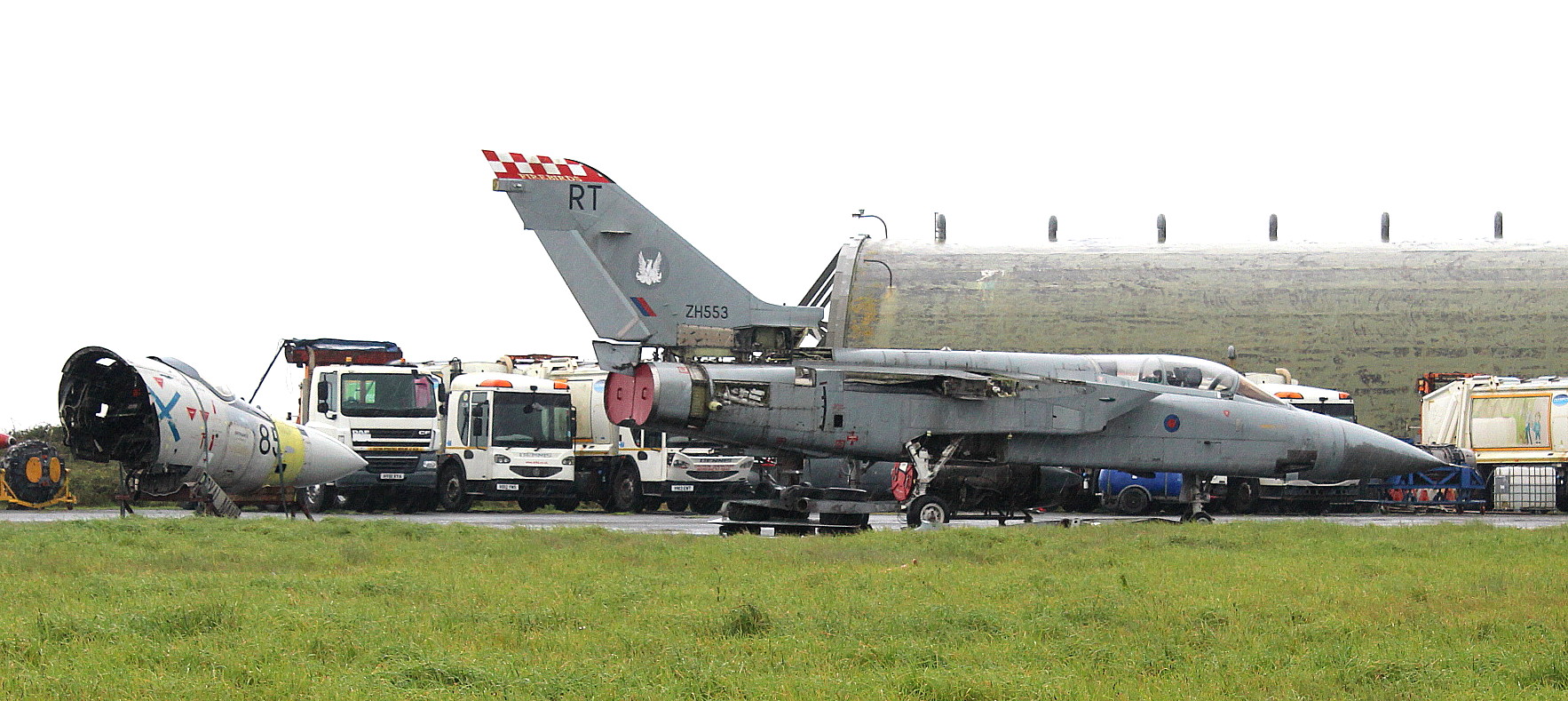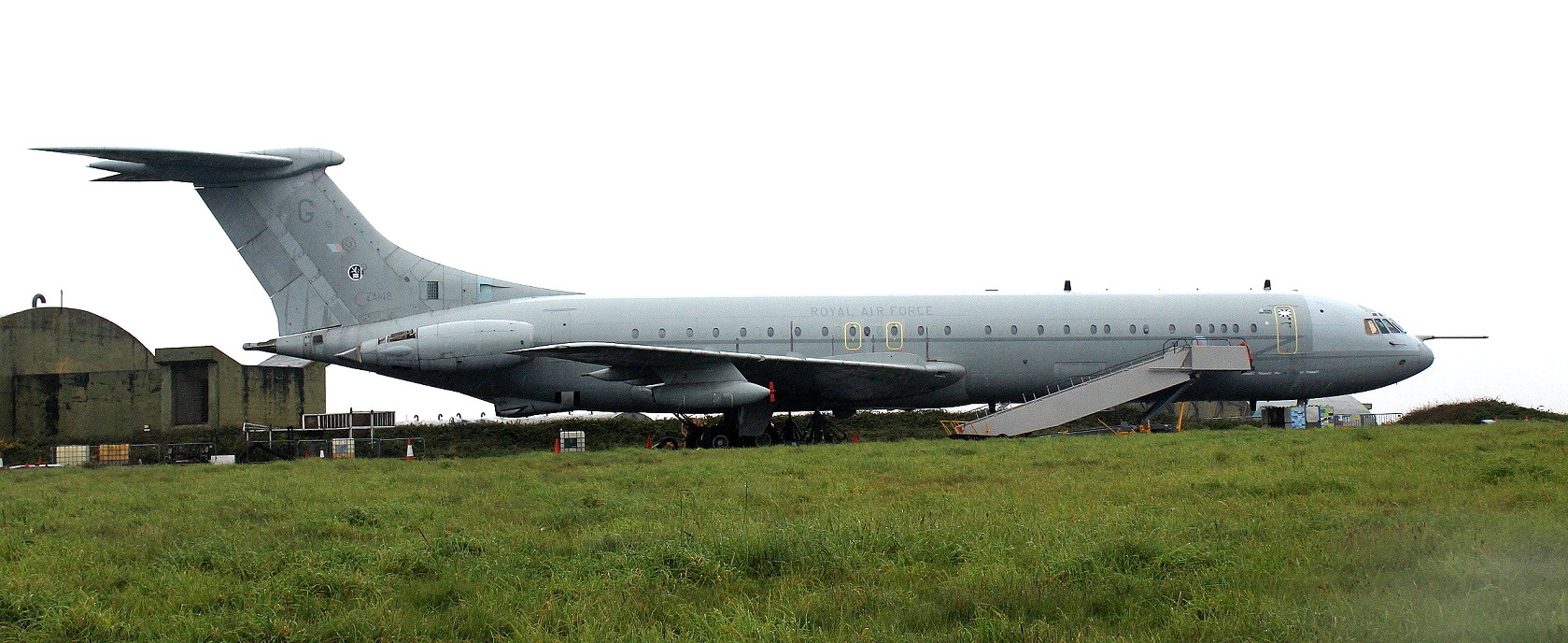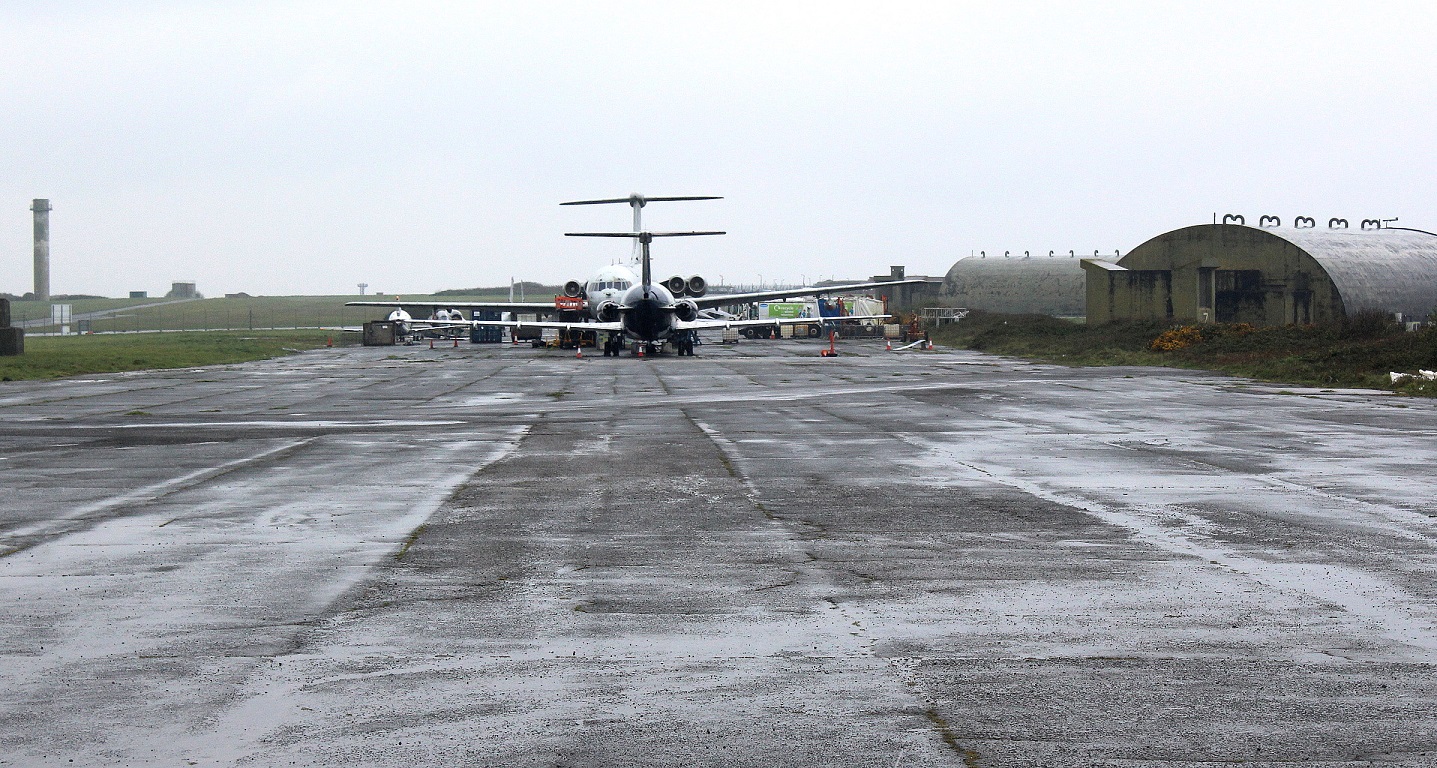St Mawgan
St MAWGAN: Military aerodrome also used by civil aircraft, and since 2008, mostly operated as a civil regional airport
Note: This picture (2018) was obtained from Google Earth ©
(Also known as NEWQUAY AIRPORT and more recently NEWQUAY CORNWALL AIRPORT). See also TREBELZUE which the site was known as, until being renamed St MAWGAN in February 1943)
Note: All pictures by the author unless specified. The first picture was taken when my pilot, Lee Merritt, (who created this web-site), decided to practise an ILS approach. And what a fine job he made of it, keeping it pegged all the way down to 200 feet.
ICAO code: EGDG IATA code: NQY
Military users: WW2: RAF Transport Command 44 Group
No.2 Overseas Aircraft Despatch Unit
Units in European Wing Air Traffic Control School
Post 1945: At least 41 years of Maritime Reconnaissance by 2005?
(Avro Lancaster MR.3s and Avro Shackleton MR.3s & T.4s)
'V' Bomber dispersal airfield (XV Sqdn Handley Page Victors)
42 (MR) Sqdn (Avro Shackletons)
From 1975: RAF (English Electric Canberras, BAe Nimrods & Westland Whirlwinds)
236 OCU (BAe Nimrods)
38 & 42 Sqdns (BAe Nimrod MR.2s)
22 Sqdn (Bristol Sycamores, Westland Whirlwinds, Westland Wessex and Westland Sea Kings)
1360 Flight (Westland Whirlwind HAR.4s)
203(R) (SAR) Sqdn (Westland Sea Kings)
217 Sqdn (Westland Whirlwinds)
1998 snapshot: RAF Flying Training (Advanced)
203 (R) Sqdn (SKOCU) 3 x Sea King HAR 3
Gliding: 1970s only?
British airline users: Post 1945: Air Anglia, Air Southwest, Airviews, British Eagle, British Midland Airways, British Westpoint Airlines, Brymon Airways, Flybe, Mayflower Air Services, Murray Chown Aviation, Scillonia Airways, Scilly Skybus, Starways, Westward Airways
2023: Aer Lingus, Eastern Airways, easyJet, edelweiss, Eurowings, Loganair, SAS and Skybus
Charter, air taxi: Post 1945: Alidair
*It was interesting to see this executive jet, CS-DXG at St Mawgan. A Cessna 560XL Citation XLS, it was operated by NetJets Europe and registered in Portugal. Portugese registered executive jets can be seen everywhere, not least at NORTHOLT (LONDON).
Foreign airlines: Post 1945: Aer Lingus Regional, German Wings*, Ryanair
*This service to Dusseldorf is summer season only. Or was in 2015
Museum plus pleasure flights: In 2013 the Classic Air Force (Air Atlantique) moved here from COVENTRY, but, when we flew in in August 2015 we were informed it had closed.
Others: Post 1945: Cornwall Air Ambulance (1990s on?)
Location: E of Trebelzue & SE of Tregurran villages, 3nm NE of Newquay
Period of operation: Military: 1943 to 2007? (Combined military and civil since ?)
Civil: Mid 1990s (?) to -
Note: This map is reproduced with the kind permission of Pooleys Flight Equipment. Copyright Robert Pooley 2014.
Runways: WW2: 08/26 1829x50 hard 14/32 2743x91 hard
01/19 1280x46 hard
1990: 13/31 2744x87 hard
2000: 13/31 2745x87 hard
2017: 12/30 2744x45 hard
(A note during military operations stated that for aircraft not cleared to ‘trample’ arrester gear the TORA/LDA on runway 13/31 is reduced to 2230 on 13 and 2325 on 31). Initially only two concrete runways were built in 1941
NOTES: Runway 14/32 was, in late 1944 at any rate, one of the longest runways in the UK on a ‘regular’ military aerodrome. It was also claimed to be the widest. Was there a specific reason for this? It appears that in 1943 the USAAF had a big influence in carrying out major improvements to this airfield. To date I can’t find any evidence that any USAAF flying took place here, which seems….odd?
On the other hand, was it possibly nominated as a Convair B-36 diversion airfield? Although the B-36 didn't fly until 1946 it is often overlooked that the infrastructure to cope with larger and heavier aircraft has to be in place well in advance of the first aircraft arriving.
NOTE: In April 2023 Mr Graham Frost, a great friend of this 'Guide', contacted me to say that; The first part of this ruse was in early March 1944, when the Boeing YB-29 Superfortress 41-36963, 'Hobo Queen', took off from Salina Air Base in Kansas and flew to England. The YB-29, piloted by Colonel Frank Cook, initially landed at RAF St Mawgan. I suspect, that having flown such a long distance, the crew were pretty much exhausted, and on spotting St MAWGAN decided to land, and then get themselves sorted out.
It seems the last Shackletons of 42 Sqdn departed in 1971.
22 SQUADRON
Any study of RAF unit or squadron history usually results quickly into a nightmare quagmire. With squadrons being moved around with often incredible rapidity. However, against this trend is appears that 22 Sqdn has played an important role here from 1955 to the present day operating originally the Bristol Sycamore, then the Westland Whirlwind and Wessex types, and eventually the (Westland/Sikorsky) Sea King.
In 1990 this aerodrome was listed as being a RAF Military Emergency Diversion Aerodrome, not normally available to civil aircraft, (presumably light GA types), so to all intents and purposes nigh on closed down?
AIRLINE OPERATIONS
I’d have put a pound bet that commercial flights into St MAWGAN probably started in the 1980s. Thank heavens I’m not inclined to betting! The first mention I have found, (so probably not the first?), is Starways operating a Douglas DC-3 Dakota G-AMSN from ELMDON, (later BIRMINGHAM AIRPORT), to Newquay, (St MAWGAN), starting on the 4th June 1960. However, it appears that when British Midland Airways commenced a scheduled service to HEATHROW in early 1973 they were the first airline to do so. Vickers Viscounts were used initially, to be replaced by Handley Page Heralds.
By 1977 British Midland had lost interest in the service but, so as not to let down their loyal Cornish customers, they sold their Herald 214 G-ATIG to Brymon Airways who appear to have made quite a success of it. It strikes me that over the previous century the role of small regional airlines – and regional airports - has come full circle and, if anything, have more potential than ever.
It would seem quite understandable that the biggest airlines lack the will and ability to develop niche markets – and why should they? And, as regional airliners become altogether more efficient (and quieter) this must surely be the way forward.
A VISIT IN APRIL 2023
Typically the weather was abysmal. A dark low overcast and raining. But were we downhearted? Yes, very much so - but, the task of trying to illustrate this 'Guide' means persevering against the odds. I remember hearing on the radio an interview with the manager of the commercial side of this airport during the Covid pandemic, and they were really struggling to keep going. Clearly by 2023 they had managed to bounce back, possibly better than ever?
THE CIVIL AIRPORT TERMINAL
CORNWALL AIR AMBULANCE
The Cornwall Air Ambulance service was founded in April 1987, and its present helicopter, the Leonardo AW197, (G-CRWL), was registered on the 5th February 2020. It is operated under the AOC (Aircraft Operating Certificate) of Castle Air at Liskeard.
MORE SIGNS
BAD WEATHER VIEWS
In this 'Guide' the general idea is to provide pictures taken in good, very good and even very, very good conditions. But of course, in our green and septic Isle, this is very often not the case - and Cornwall gets more than its fair share of abysmal weather - sticking its toe out into the Atlantic. So, it seems fitting to include a couple of pictures to illustrate this - and it can often get much worse than pictured here.
Note: The Airbus A320-232, ES-SAW, (Estonia), was delivered to TUI Belgium in August 2021. But, such is the nature of such operators, it has since seen another change of operating company, before becoming operated to TUI by SmartLynx when seen here in April 2023.
CORNWALL AVIATION HERITAGE CENTRE (Aka NEWQUAY AIR MUSEUM)
It seems such a shame that this project, once the Classic Air Force collection, has had a constant struggle to survive, and has moved three times here in recent years. Indeed, when we went to visit in April 2023, it was listed as being temporarily closed. These pictures were taken when the collection had been moved to the southwest end of what was once runway 08/26. And as said above, in very inclement conditions.
NOTES: The aircraft seen in the pictures above are the English Electric Lightning F.53, XS935. The BAE Hawk T1, XX240, and the, (what shall we call call it?), de Havilland, Hawker Siddelely or BAE HS.125 CC3, ZD704. Then the Vickers VC.10 K3, ZA148. Plus the Hawker, or if you prefer Hawker Siddeley or perhaps BAE Harrier GR3, XV753.
Tracing the history of so many types, during the contraction of the British aviation industry can be something of a minefield, nightmare, quandry etc. There are two examples shown of the Panavia Tornado. The GR.4 ZA398, and the F.3 ZH553. The BAC 1-11 is ZH763, once based at BOSCOMBE DOWN for test-pilot training. And last by not at all least, is the Hunting, (originally Percival), P-84 Jet Provost T3A, XN494.
SOME MEMORIES
In October 2023 I was kindly contacted by Mr Derek Noton, who sent these memories. Which I think, are well worth sharing.
"I was amongst the last National Servicemen in 1960, and in 1961 I was posted to St Mawgan, nr Newquay, which had been recently refurbished and extended. In fact the barracks were only finished that year."
"Amongst my memories are the regular dispersal, on red alerts, of the V force, Victors usually, whose high tail planes lurked menacingly along the far (Eastern) edge of the airfield. We always knew when a "scramble" was planned, and often went to the tower to watch. Eventually a red Very light went up from the tower ( a bit low tech!) and after a pause the engines roared. The 'planes bounced directly over the grass, quickly formed up, and almost without a pause, well within two minutes, they set off down the runway."
"The sight of these massive machines hurtling down the runway, tucked together in a diamond formation, in a proximity which would do credit to the Red Arrows today, was awe inspiring. The noise of sixteen engines at full throttle was ear drum bursting, gradually dying away as the 'planes scattered onto their "target" flights."
"I worked as a technical clerk in a office just behind the hangars. I particularly remember noisy afternoons when Vulcans were practicing instrument landings, with the altimeter calibration set a few hundred feet above the ground. Remember the Vulcan's nose up attitude on landing? The exhausts pointed directly at the ground. After a dozen or so "passes" one just wanted to scream, and cower under the desk."
"Given that National Service was unavoidable, I quite enjoyed my time at St Mawgan. It was a Master Diversion Airfield, so "guests" were fequent. At the time I had a hand book of world wide military aircraft, which was often in demand by the maintenance teams, who needed to identify the lubricants need for previously unrecorded visiting aircraft. I also used to do drawings of requested modifications to ancillary equipment on the Shackletons which we flew."
5100347 SAC Noton 1960/1962
Bob Hankinson
This comment was written on: 2021-06-07 23:18:22In 1974 I was the air movements officer at RAF St Mawgan (not very busy in that part of my rule). My home was in Jersey and I booked a flight with Brymon Airways from St Mawgan to Jersey. One of my team drove me to the civil side, which consisted of a Portakabin. Nobody was there. A car screeched to a halt, and a young lady jumped out, checked my name and unlocked and went in. Then she called Plymouth and said "he's here". Thereupon the pilot finished his coffee and flew an Islander down from Plymouth to pick me up and take me to Jersey. He let me fly in the right hand seat and let me have the controls. His best advice was that straight flight was easy to judge by eye from the horizon (in VMC over the sea) and that level was best judged by picking a spot on the central windscreen pillar when level by instruments and keeping that spot on the pillar at the same line on the horizon. He did take back control as we came alongside Jersey for an approach over St Ouen's Bay. On the return journey, I was again the only passenger and Brymon asked if I minded if we went via Morlaix in France to pick up some other passengers who wanted Plymouth. Fine by me. On the way back, they asked if I minded if we went to Plymouth and they would send me in a taxi from Plymouth to St Mawgan. That was fine by me also. On approach, Plymouth was marginal weather. Sitting in the back this flight, the ground arrived rather suddenly in the low cloud. Taxi home and all was good! So, commercial flights at St Mawgan were in being in 1974.
We'd love to hear from you, so please scroll down to leave a comment!
Leave a comment ...
Copyright (c) UK Airfield Guide















